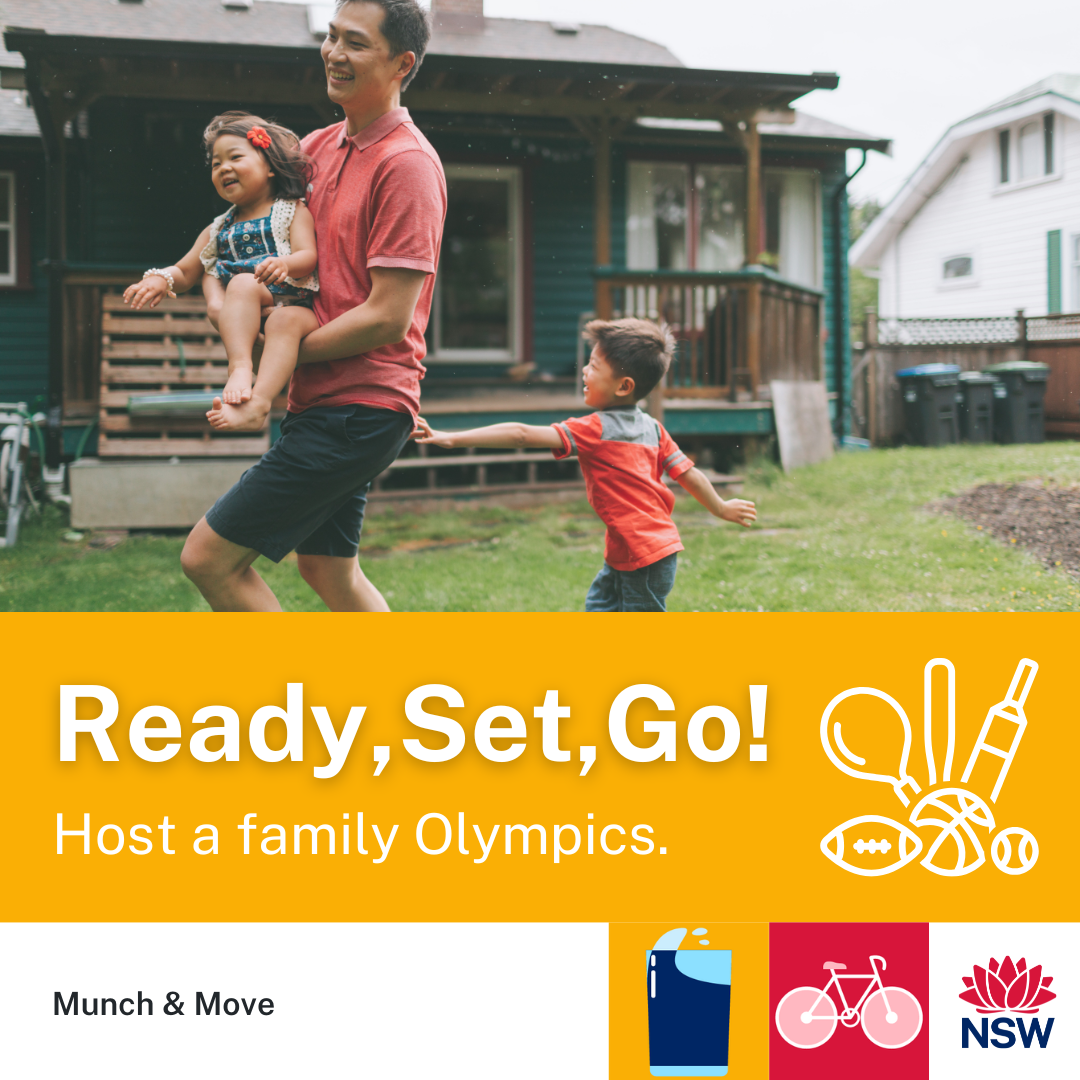On this page:
Family communication tiles
Below are some images and information to share via your service's social media platforms, communication apps and newsletters.
To download, right click the image and 'save image' to your desktop. Then add the image and associated text (where possible) to your communication platform.
Please contact ISLHD-HealthPromotion@health.nsw.gov.au if you have any questions, comments or ideas for future content.
You don't need a ball to play ball games! Use rolled-up socks, a balloon, or a soft toy to create your own throwing and catching games.
See our ball skills at home flyer for game ideas.

Messy play engages all a child's senses, helping to develop a variety of skills. Children gain a better understanding of the world by exploring how things feel, smell and taste.
Visit the WA Playgroup website for messy play ideas.
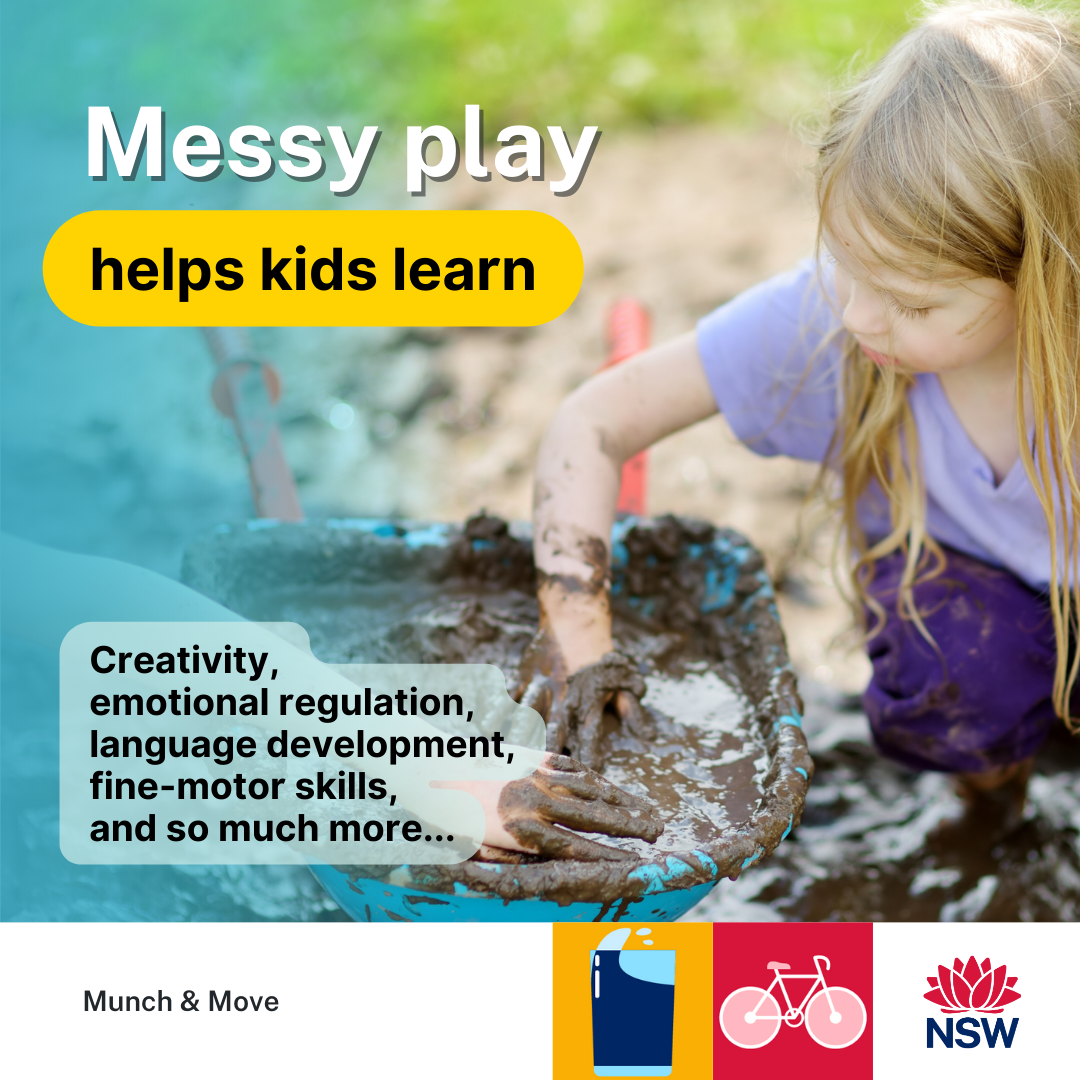
For many young children, screen time has replaced playtime.
For tips on how to reduce screentime in your family, check out eSafety's screen time tips flyer.
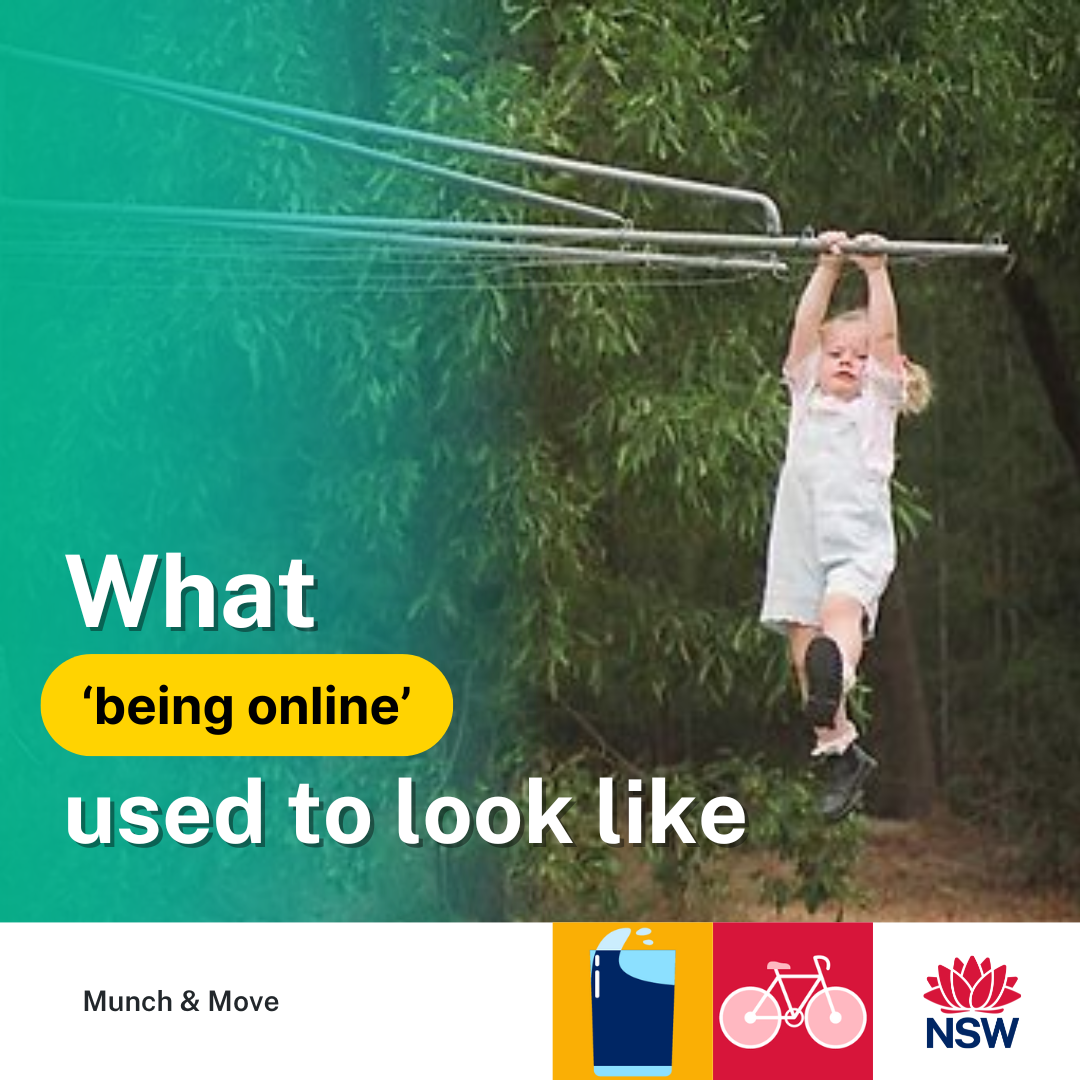
Yoga is a fun and relaxing way for children to improve their body and mind. It helps improve strength, flexibility and balance. Yoga also teaches children how to focus, handle stress, and feel calm. Simple poses and breathing exercises help children feel good and stay healthy.
Check out the Crunch & Sip yoga cards or zoo animal yoga cards.
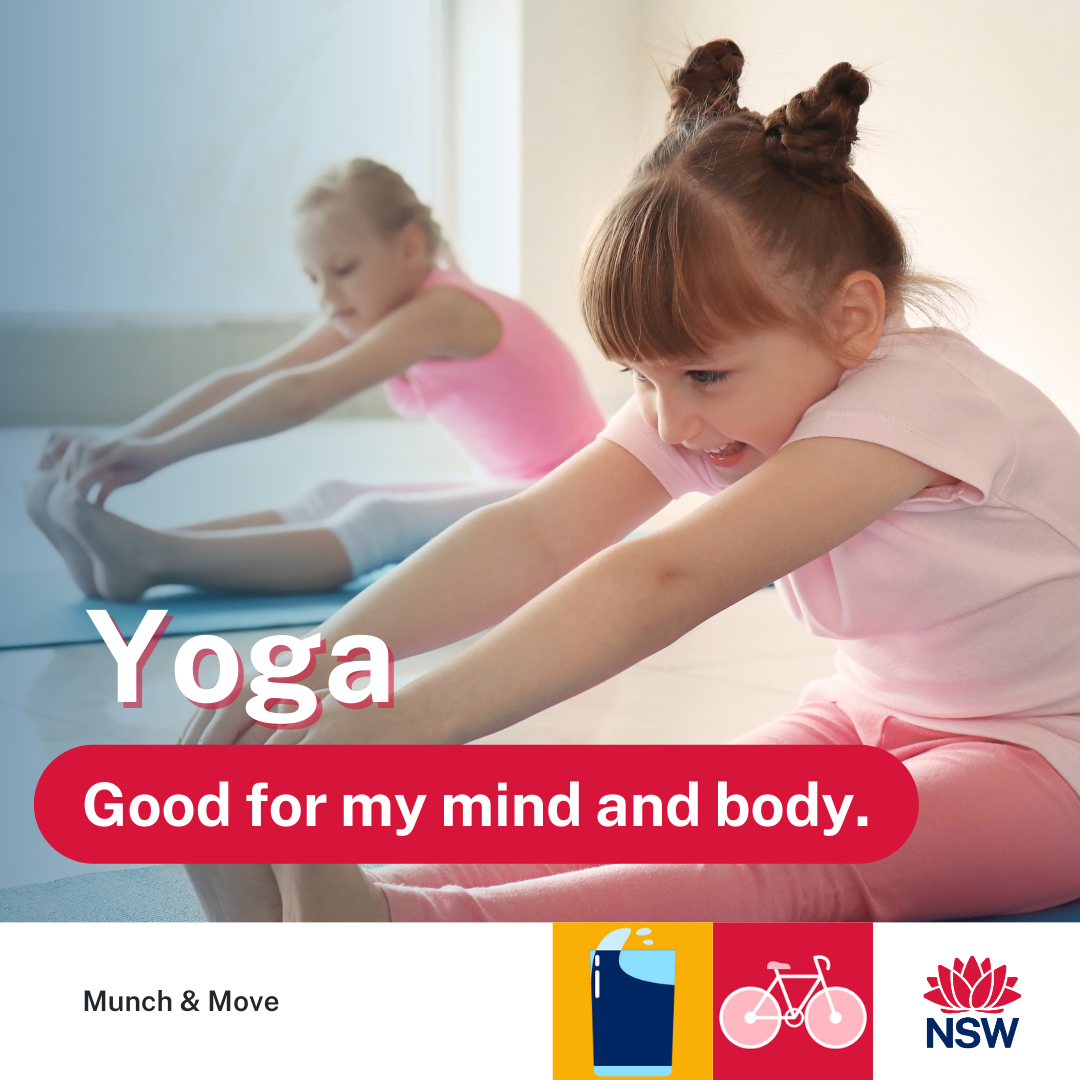
What are your favourite memories as a child? Research tells us that quality time spent outdoors helps children build strong connections with their parents/carers.
You can find some great, free, local family adventures by registering for the free ‘Adventure and Veg’ program.
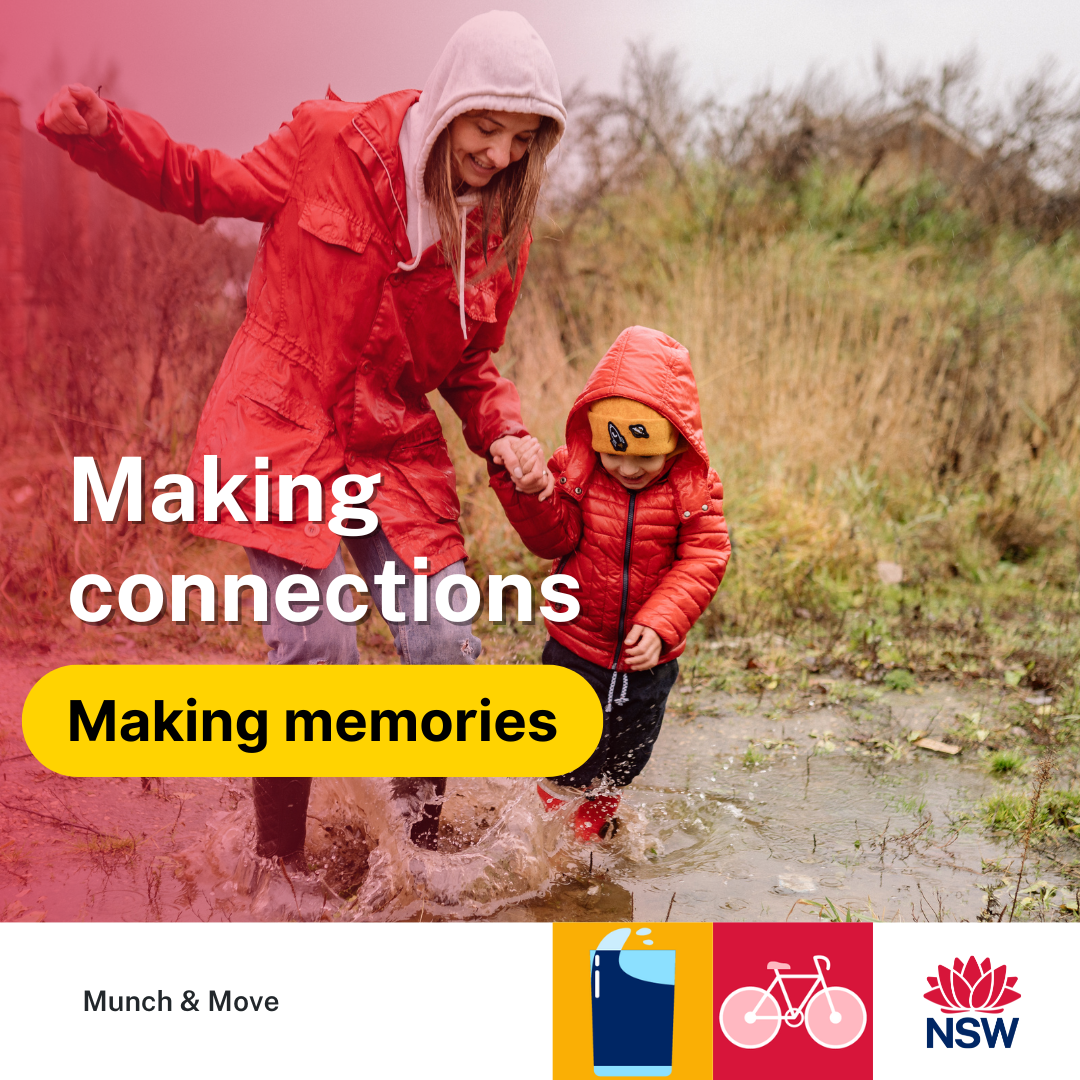
Risky play is an important part of early childhood development. When children climb, jump, balance, or explore new heights, they’re not just playing, they’re building confidence, resilience, and critical thinking skills.
Find information on how parents can support young children’s risky play or watch a video from the Raising Children Network on risk in play and child development.
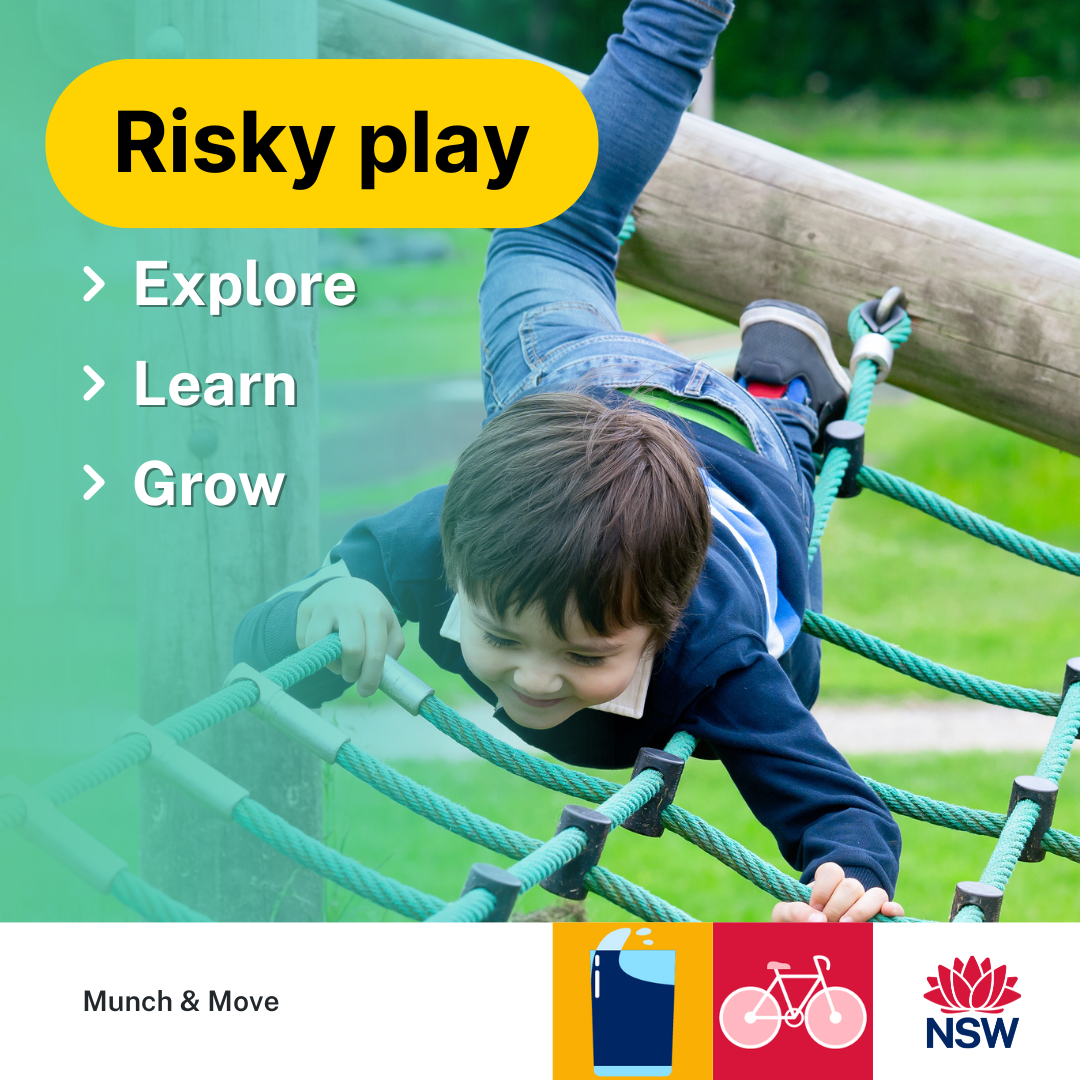
Cold weather is a fun time to explore the outdoors in a new way. Put on your gumboots and raincoat, look for bugs after the rain, go on a scavenger hunt, or throw rocks in puddles and watch them splash! Children can learn a lot by playing outside in all kinds of weather.
Check out Children playing outside in all weather from the Raising Children Network.
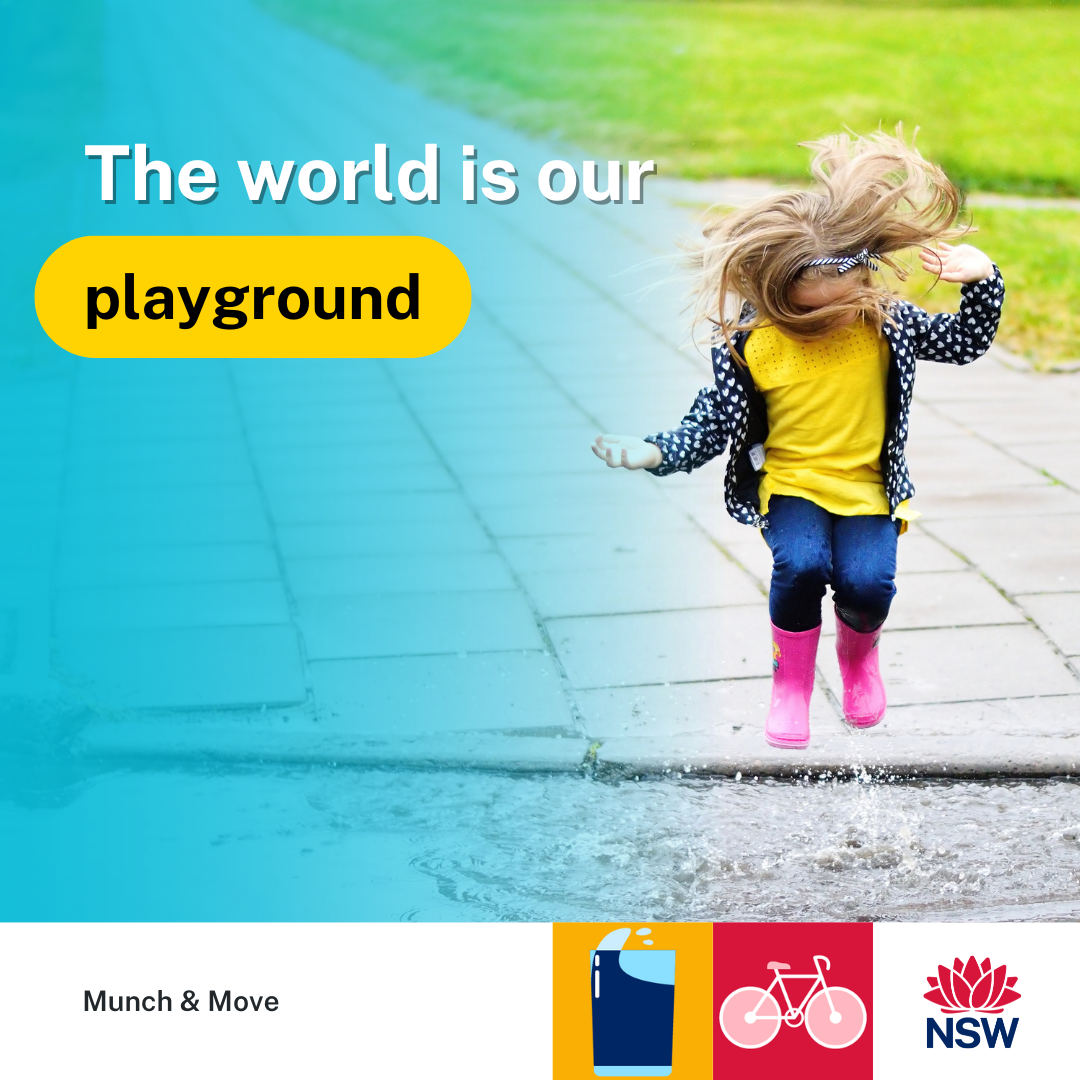
If you’re looking for ways to get your children away from the screens and get outside as a family, search the Play Illawarra (and Shoalhaven) website.
You’ll find lots of great parks and outdoor spaces to keep children happy and moving.
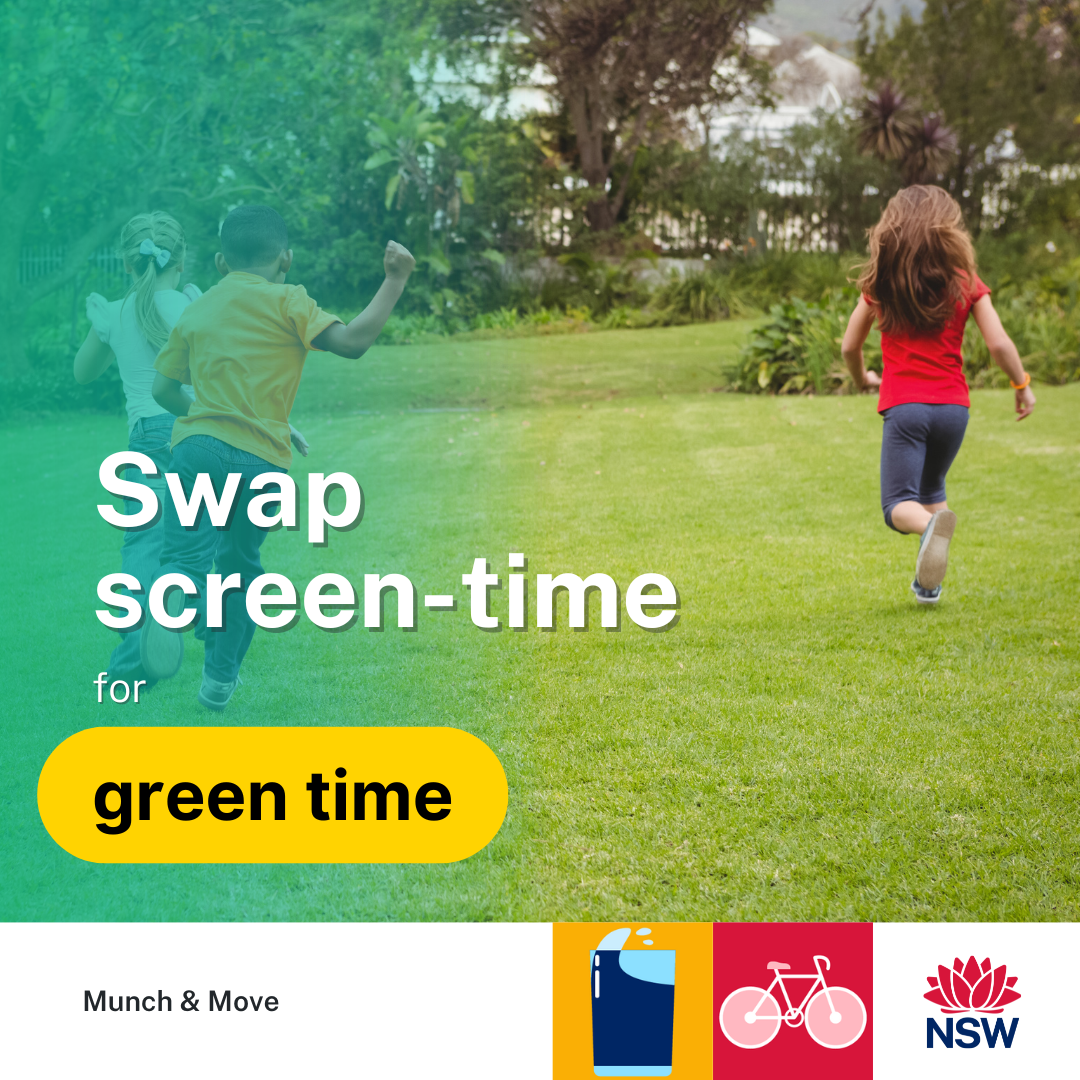
A ‘safe’ food is a food that has been accepted and eaten previously. Having ‘safe’ foods on the plate helps children feel braver about tasting and perhaps even eating a new food.
Find out more about safe foods at PICNIC project.
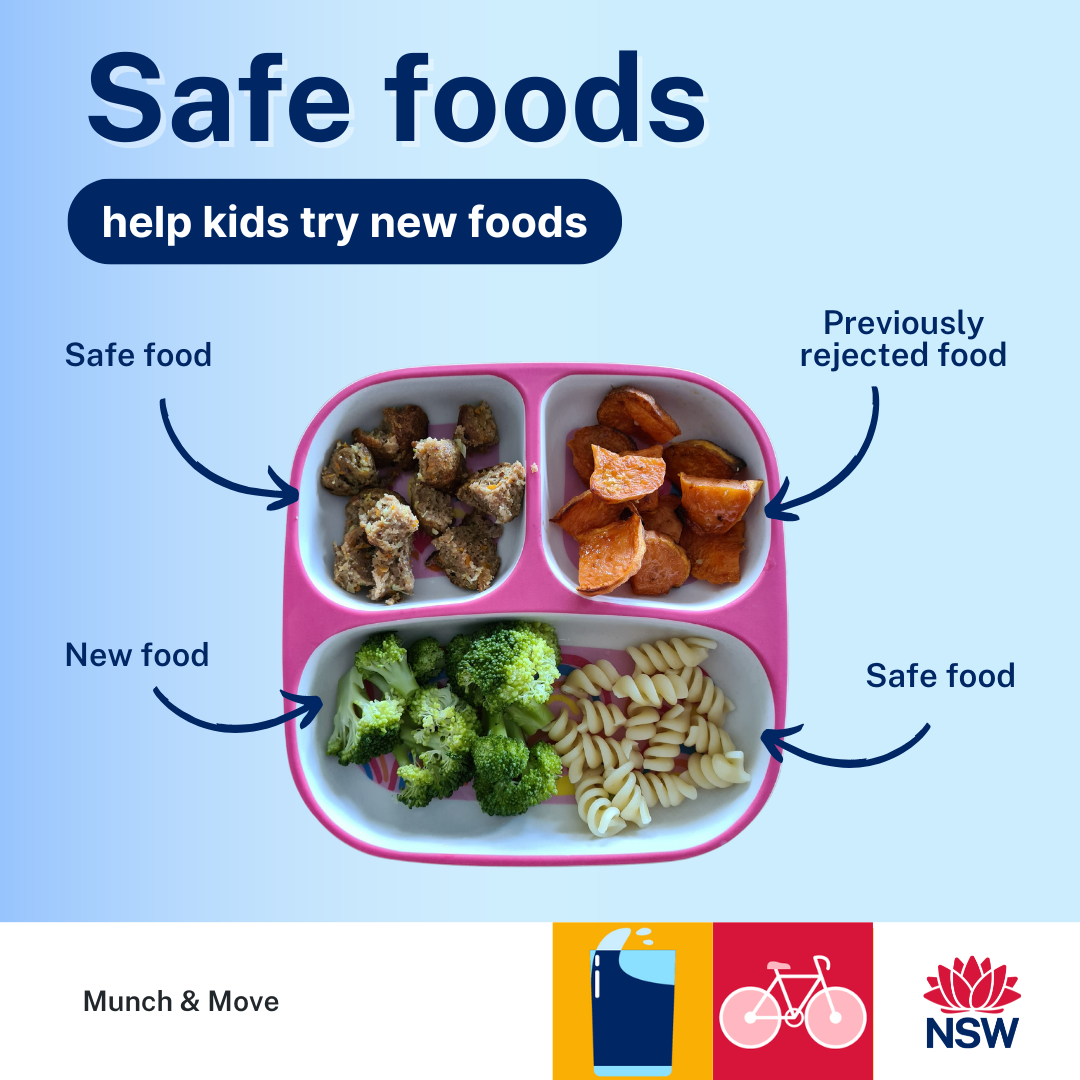
Just like any other skill, children need to learn how to become healthy eaters. This can be done through activities like reading stories, helping with cooking, creating food art, or using toys.
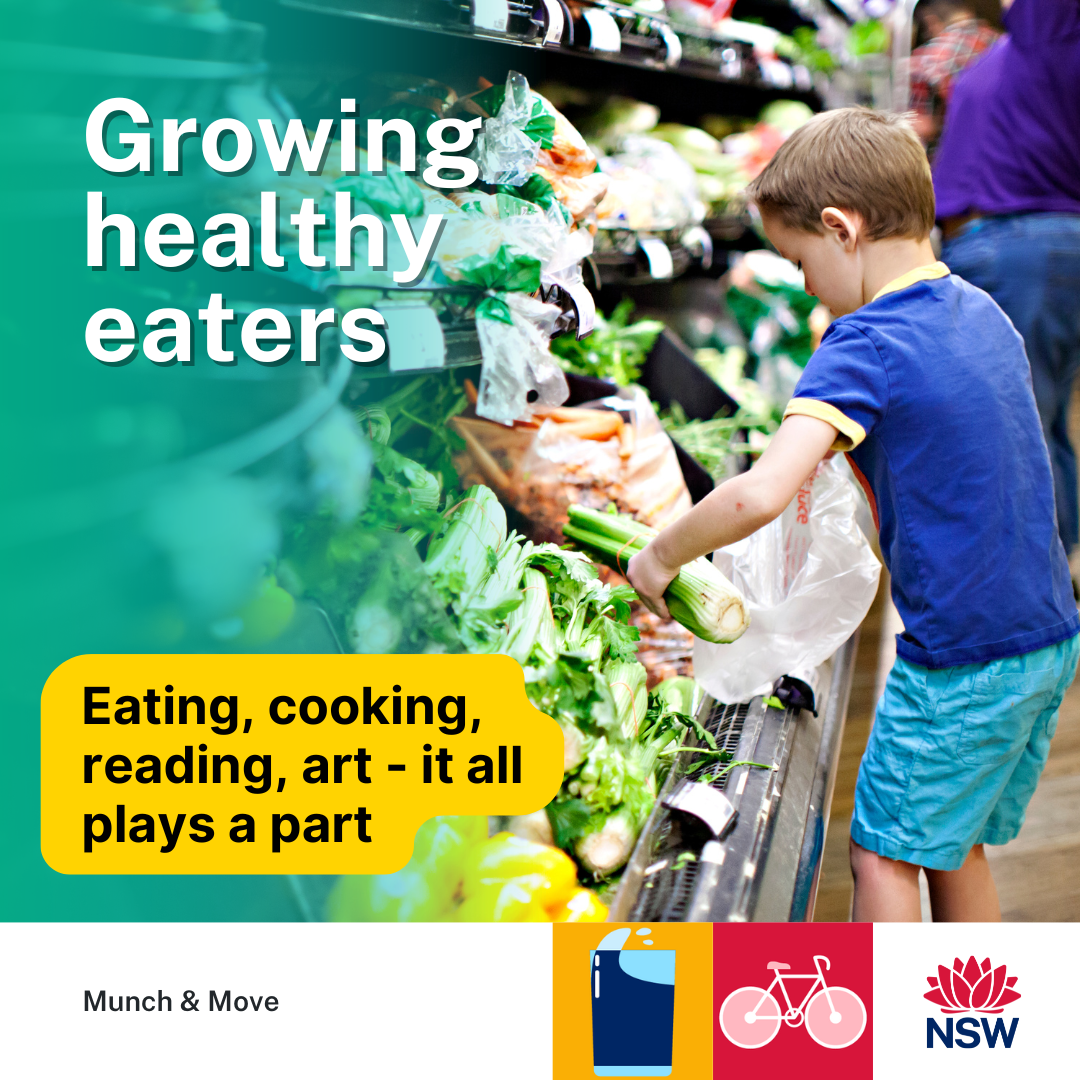
Sugary drinks like soft drink and juice contain high amounts of sugar which can lead to tooth decay and weight gain. Water is the best choice!
Check out the Thirsty? Choose Water factsheet.

Breakfast gives children the energy they need to start the day. A healthy, filling breakfast helps them concentrate, play, learn, memorise and problem solve.
For tips and ideas, visit the Raising Children website.
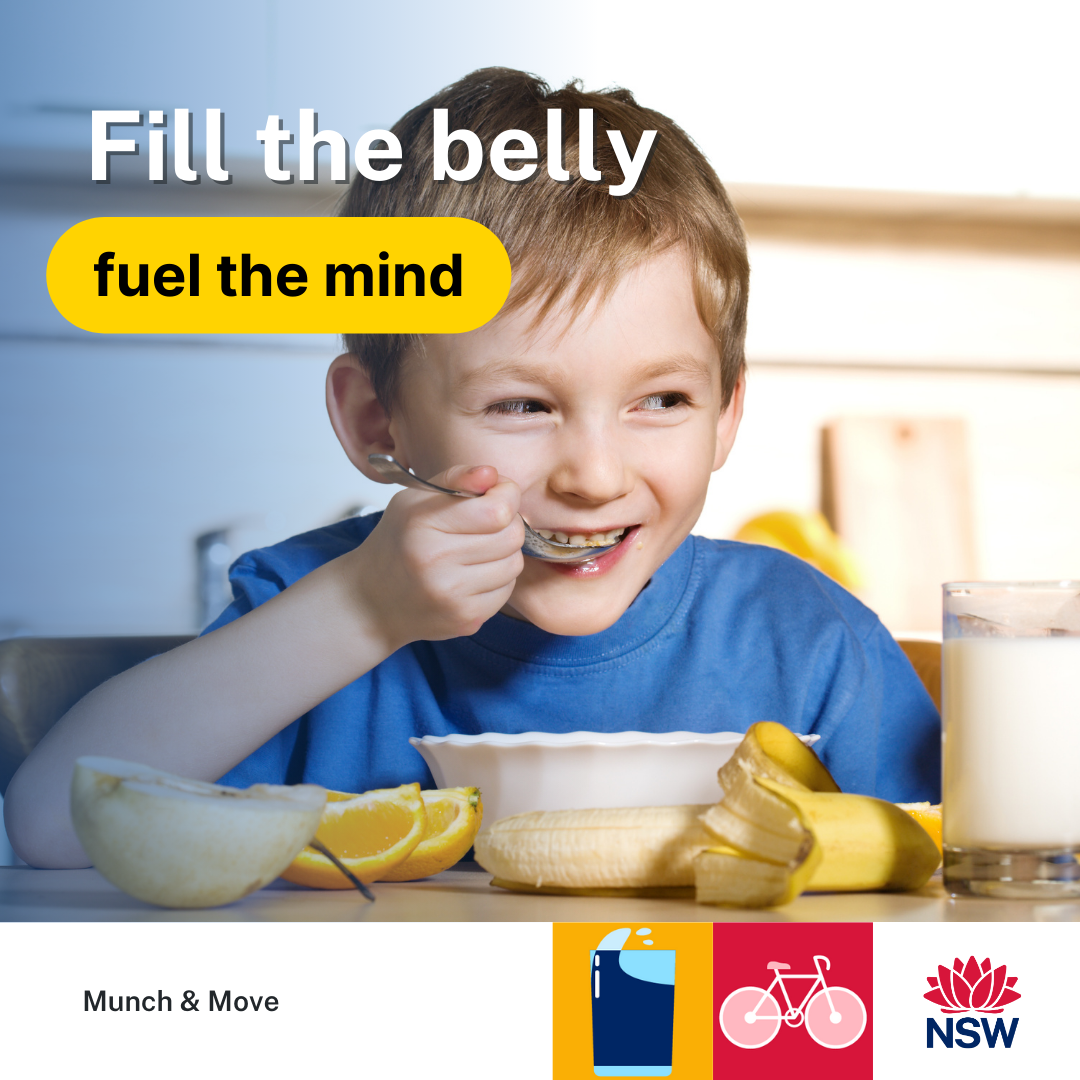
The best way to help your child choose healthy foods is to show them that you like eating those foods. This helps them feel that the food is safe and makes them more likely to try it.
Check out more tips to grow healthy eaters.
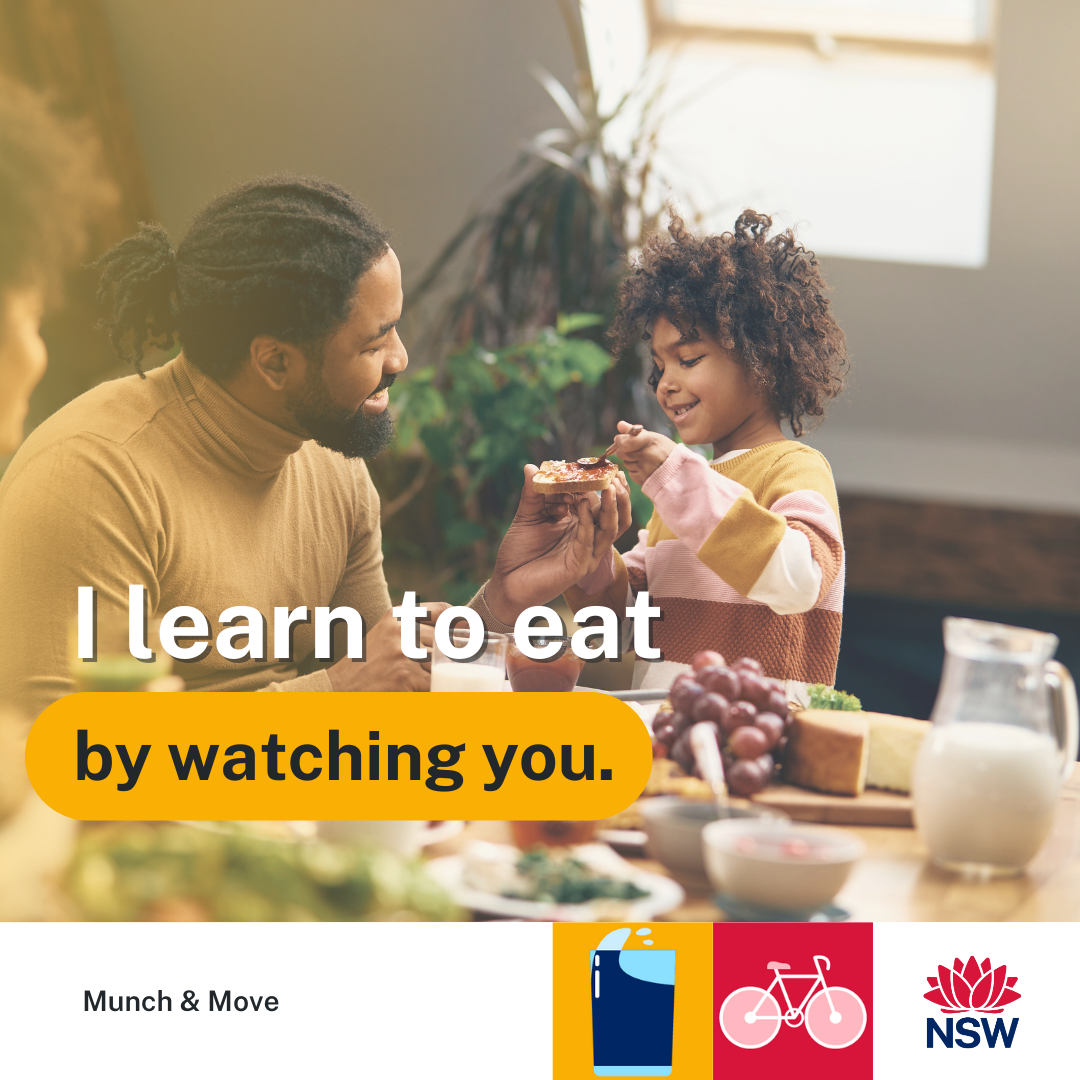
Do you have trouble getting your child to eat healthy foods? Just like learning to ride a bike or read a book, children have to learn to accept different foods, and this takes time and lots of practice.
If you would like some tips on how you can help your child build confidence with healthy food, check out these tips or register for a Growing Healthy Eaters webinar.
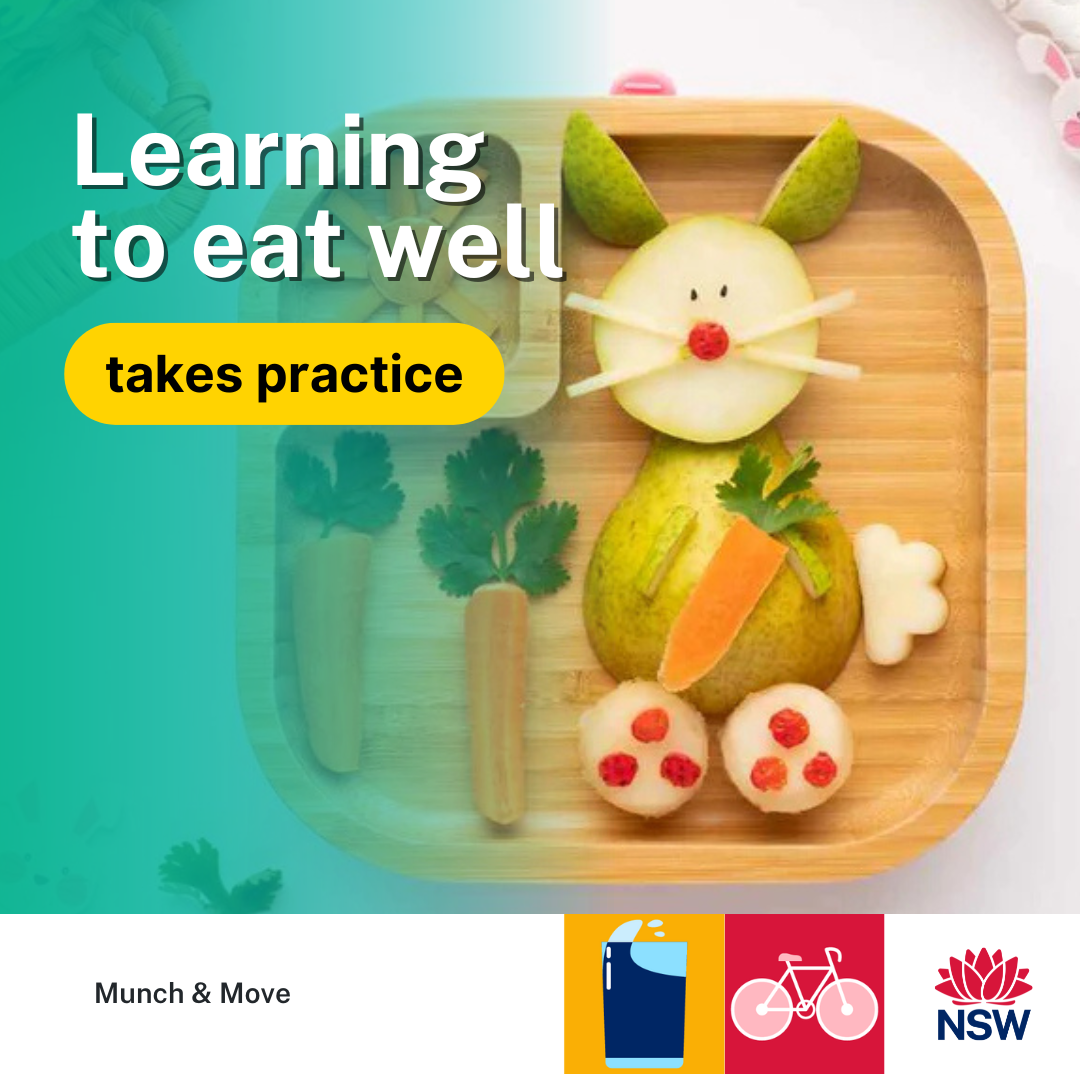
Lunchboxes don’t have to be fancy and include every food group to meet children’s needs. Aim to provide a mix of foods you know your child will eat, along with a new food to try. This could be as simple as a sandwich, yoghurt, fruit and veg sticks, and something extra, if you like - whatever you have readily available.
For lunchbox ideas, see the lunchbox flyer.
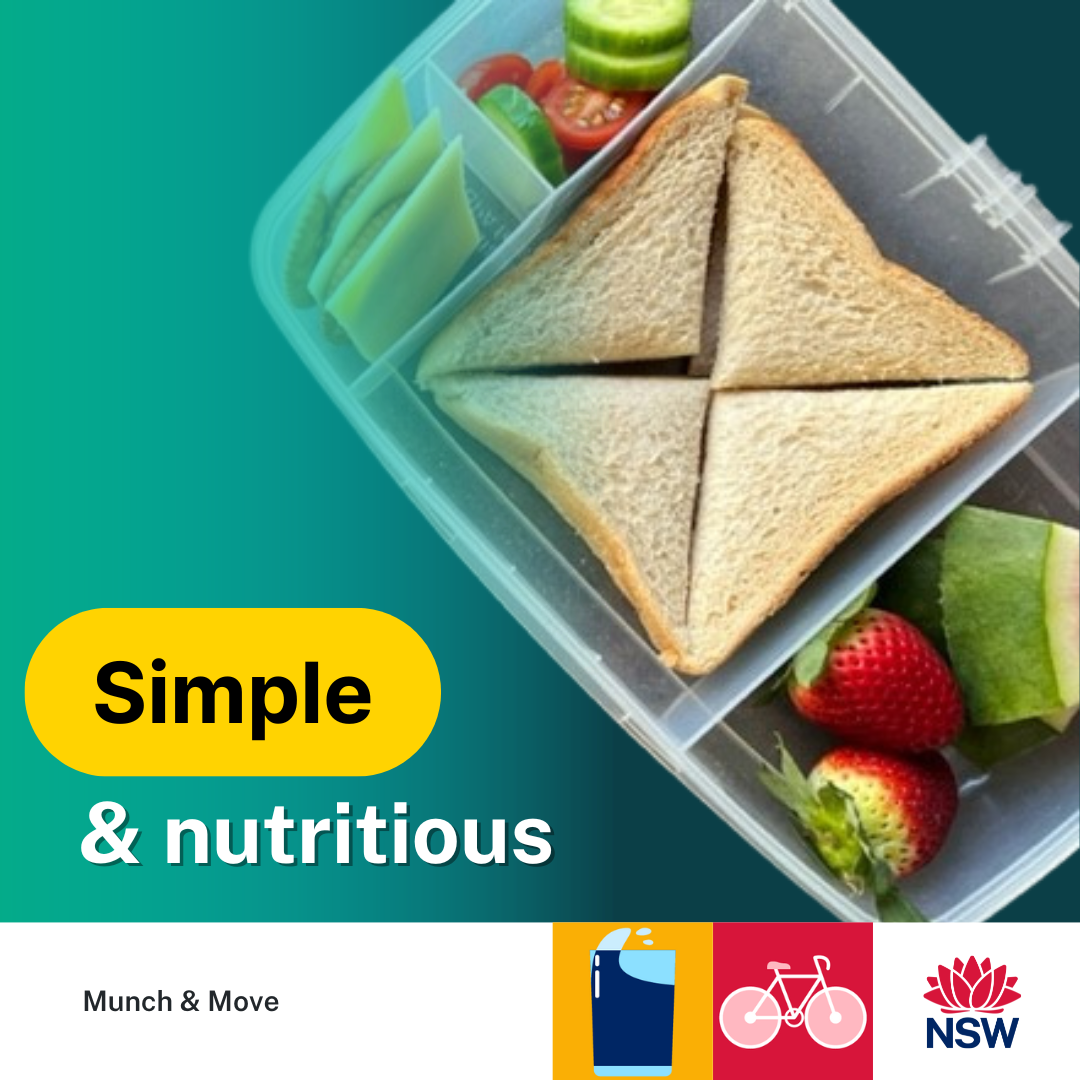
Caregivers have a wonderful opportunity to support children as they learn to eat. An important part of this learning journey is trusting that children know when they are hungry and full. When adults provide (what, when and where at mealtimes) and children decide (what and how much to eat), it helps children become more confident with their eating. For more information and recipes check out Play School’s Let’s Eat Useful Cookbook.
You play a big role in helping your child learn to eat! One of the most powerful things you can do is trust them to know when they’re hungry or full.
When grown-ups provide what, when, and where of meals and kids decide what and how much to eat. It builds confidence and healthy eating habits.
Explore more tips and tasty recipes in Play School’s Let’s Eat Useful Cookbook.
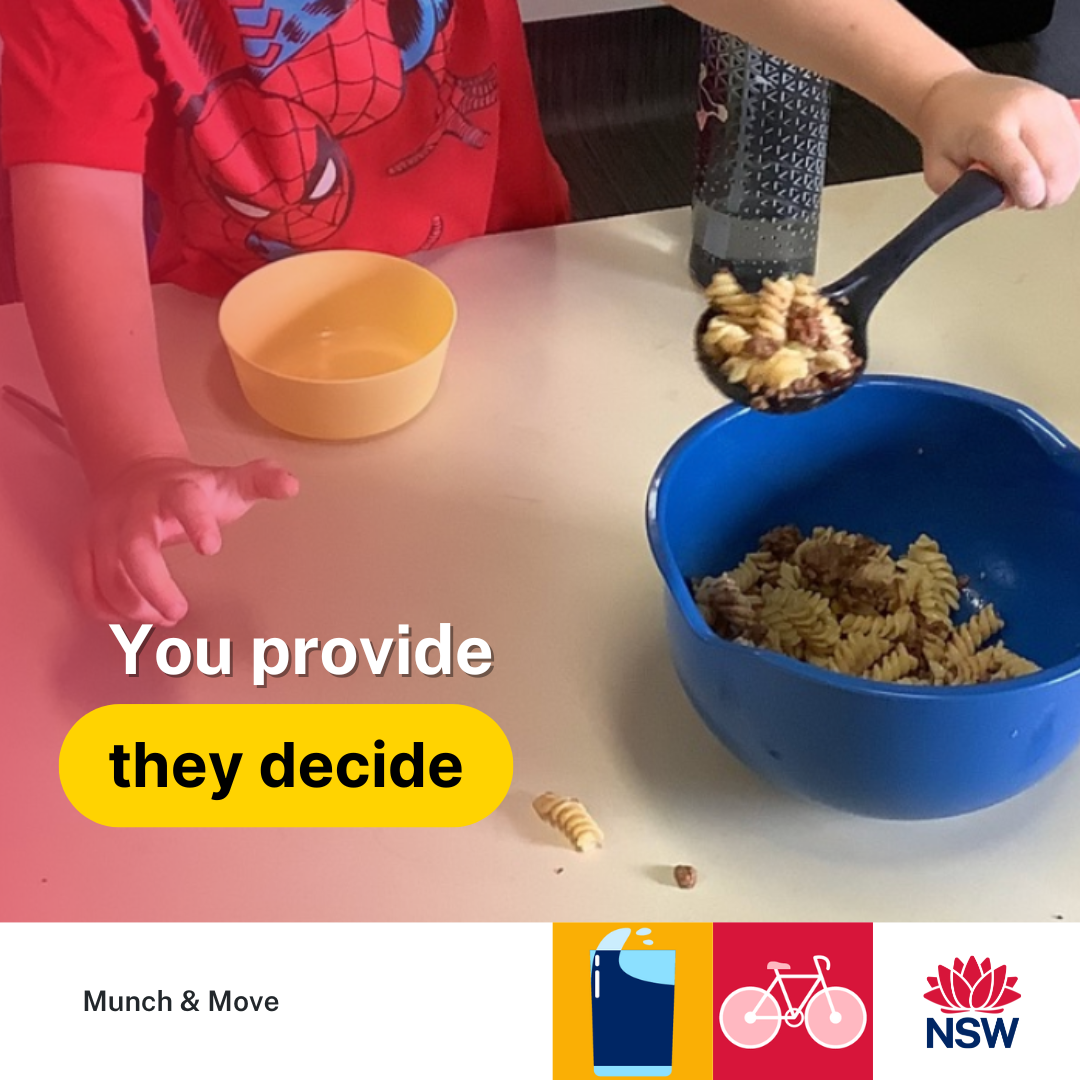
Play is like fireworks going off in the brain. When children try different activities they can learn new skills, stay interested and challenged, and get enough physical activity in their day.
For more information, visit the Raising Children Network.

Did you know that children can start to drink from a cup from 6 months old? This supports children’s independence and self-help skills.
For more information, visit the Raising Children Network.

Sleep or a lack-of sleep can have a massive impact on your family’s well-being.
If you would like to learn about healthy sleep habits for your family, check out Raising Children Network's top 10 tips.

Nursery rhymes, a story or the singing the alphabet? It doesn’t really matter what it is, singing to your baby has many benefits.
Find out more on the benefits of singing to children.
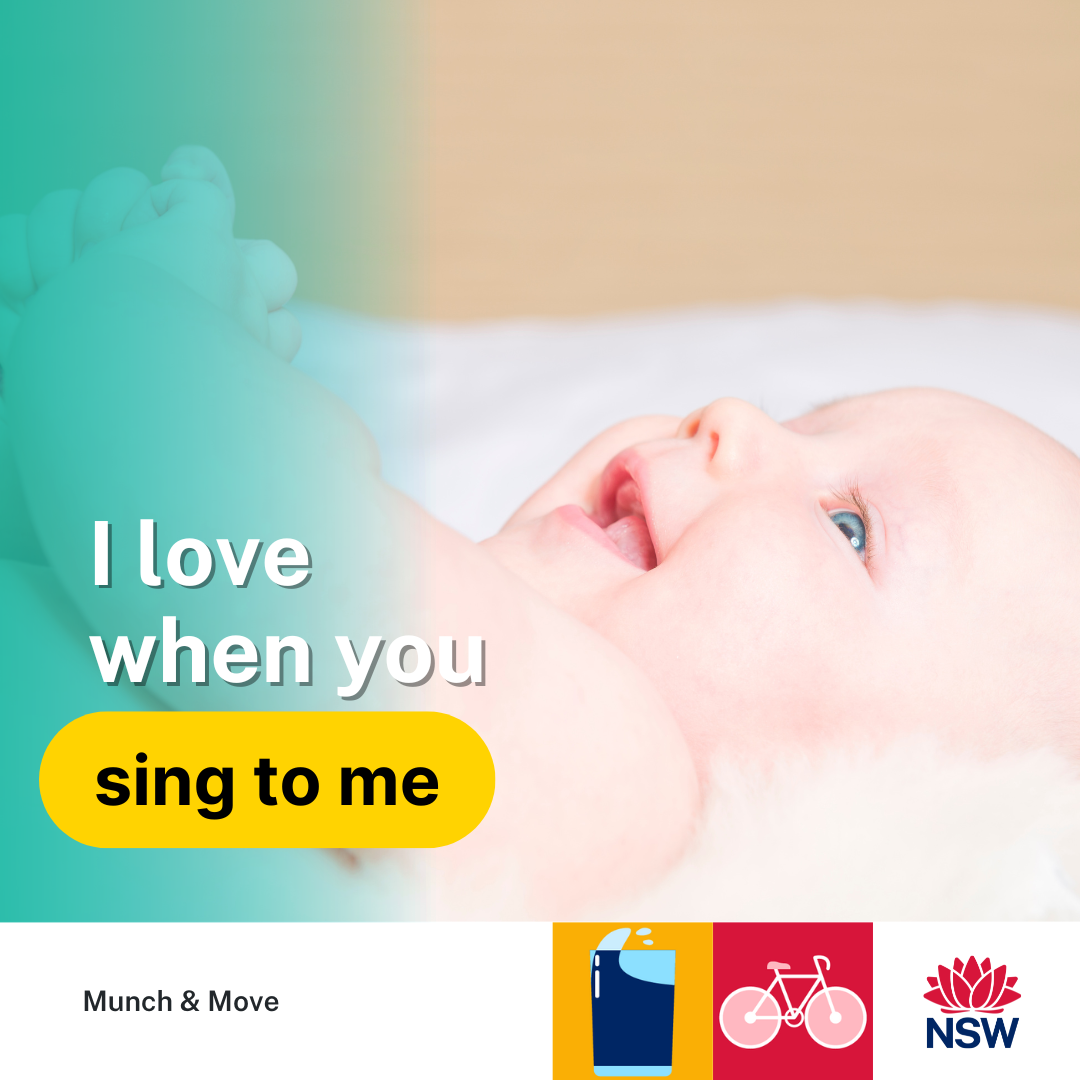
90% of brain development happens in the first 5 years. One of the most important things you can do to support this growth is screen-free, one-on-one time with your child.
For information check out the ideas on Thrive by 5: The ideas hub or ABC Connect with me - childhood experiences.
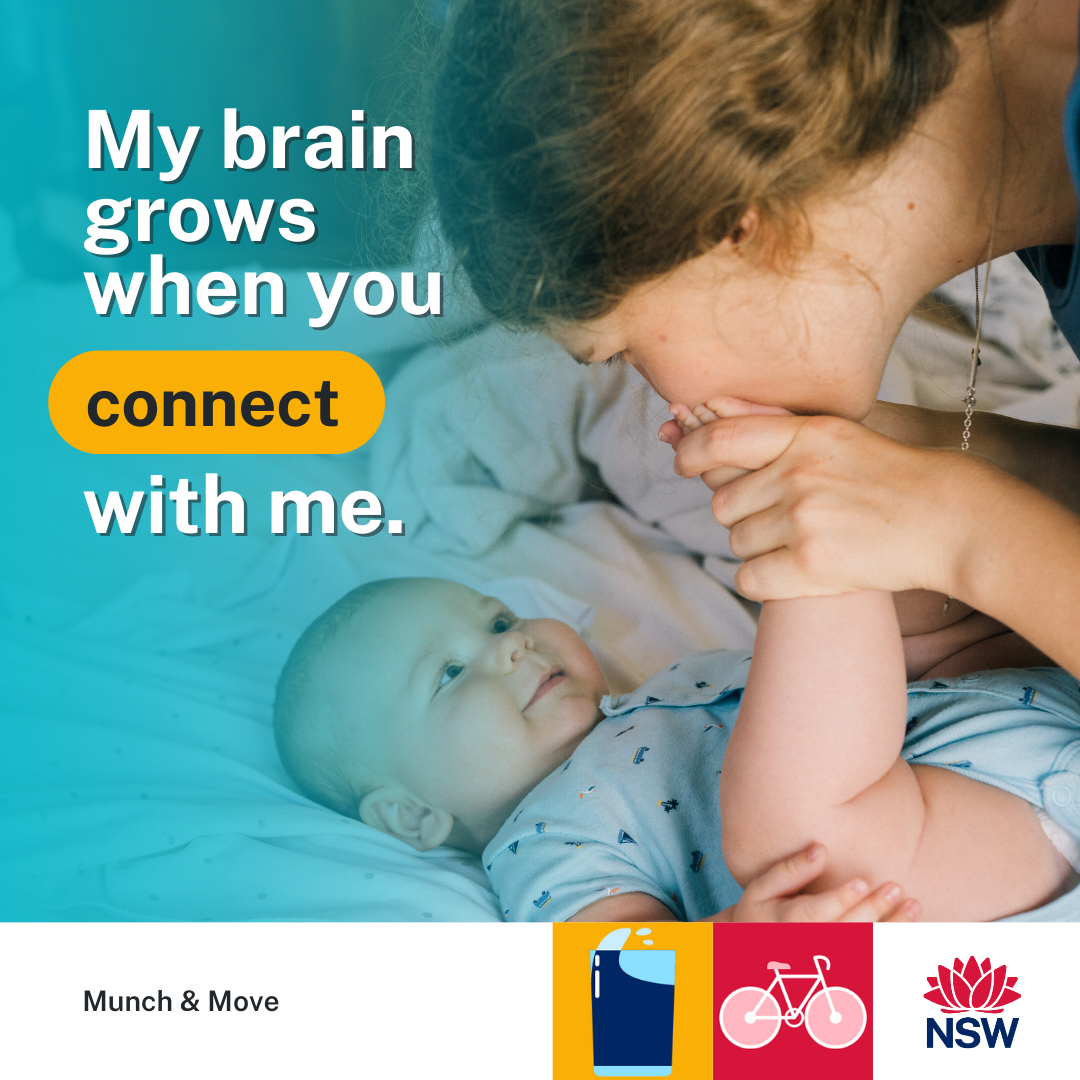
Did you know that brushing your teeth twice a day helps prevent cavities, keeps breath fresh, and promotes healthy gums? It’s a simple habit that builds a lifetime of healthy smiles! Children under 18 have access to free dental care.
Call: 1800 679 336 or find out more about how to care for your children's teeth.

Regular health and development checks are a great way to celebrate your child’s progress and support their continued growth. Specialist nurses can offer helpful advice and guidance if any extra support is needed along the way. Starting Kindergarten with strong developmental foundations helps set children up for a healthy and thriving future.
For more information see Accessing Health Services – Information for Families and Child and Family Learn the Signs: Act Early.
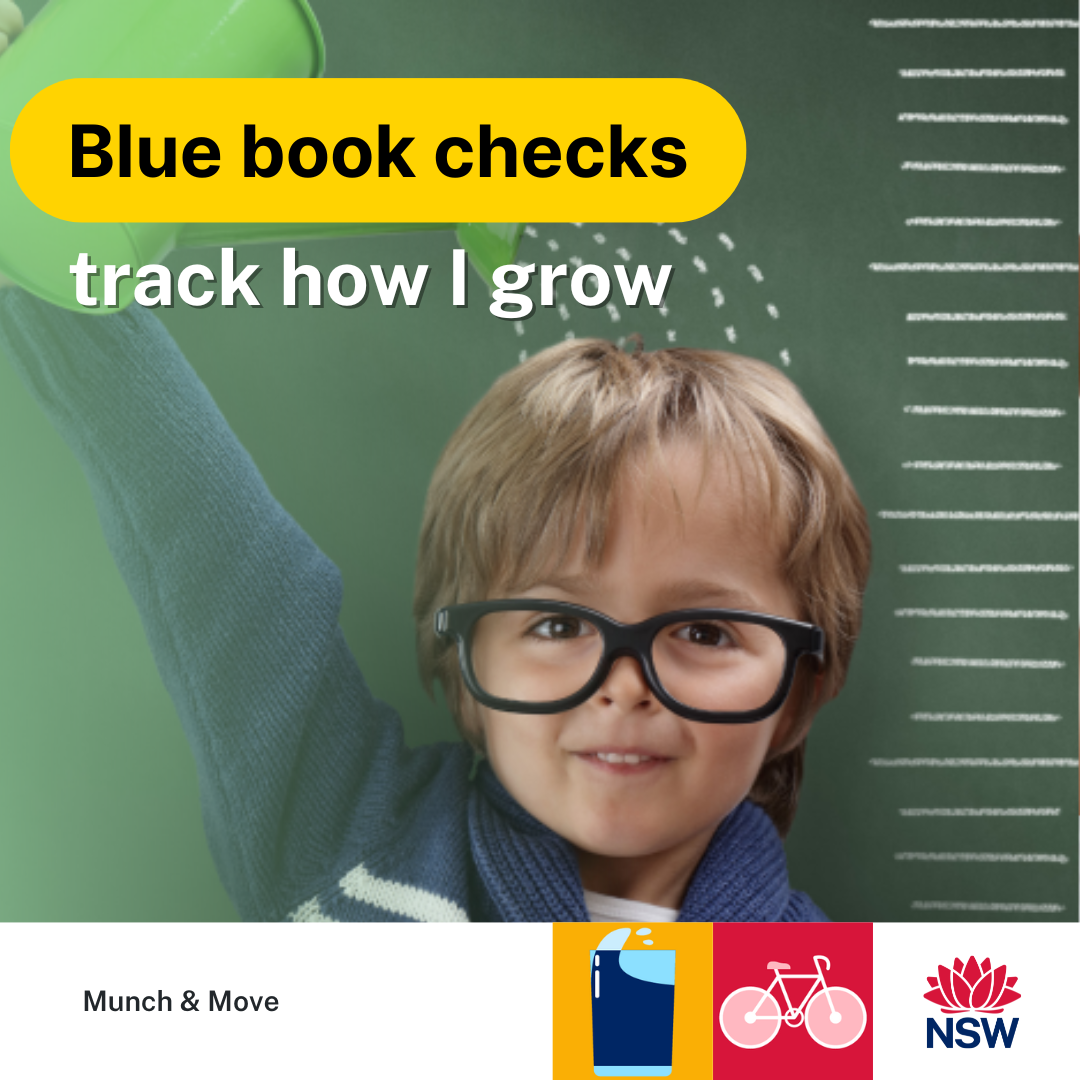
Children usually start learning to use the toilet between the ages of 2 and 3. It can be an exciting time for you and your child, but it might also feel a bit overwhelming.
Learning to use the toilet can take a few days, weeks, or even months. Try to stay positive and cheer your child on - they’ll get there in the end! How do you know if they’re ready and how can you help them? Read more on Toilet training: when and how to do it from the Raising Children Network.
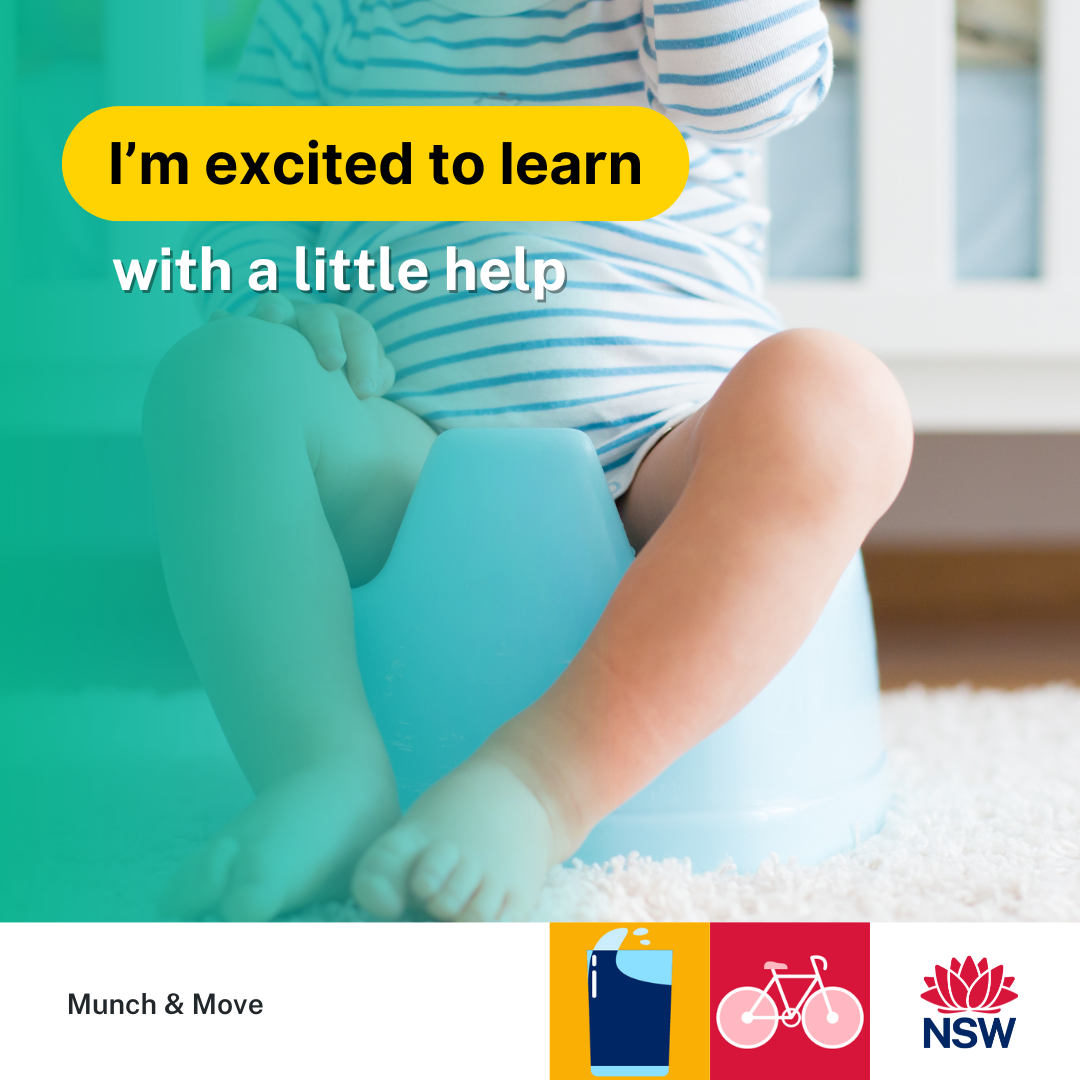
Offline Adventure tiles
The Offline Adventure is a chance for families and services to explore fun, engaging activities that help children develop communication skills, creativity and active play habits – without screens.
This 2-week Offline Adventure features 10 days of fun and engaging content.
Use the Offline Adventure to encourage families to make more meaningful moments together, while also strengthening relationships between your service and families (supporting Quality Area 6: Collaborative partnerships with families and communities).
View the Offline Adventure manual.
Join us for an Offline Adventure. A screen-free challenge that’s all about fun, connection, and creativity.
We are inviting families to swap screen time for activities that spark dreaming, connection, and play. Each day, we’ll share a family-friendly activity to try, and we’ll also take on an activity at our service.
Can’t fit it in that day? No worries! Save it for the weekend or whenever works best for you. Let’s make this adventure unforgettable!
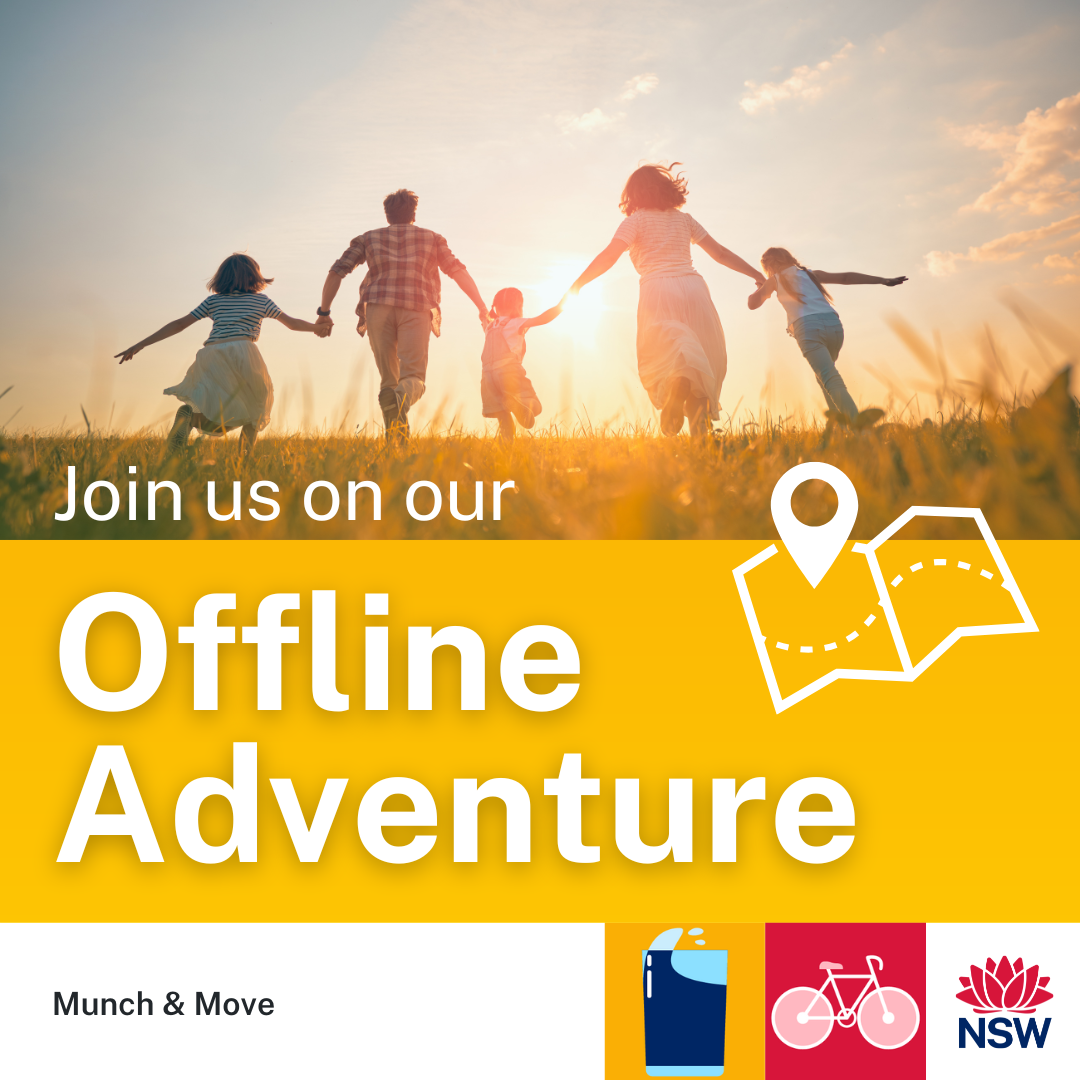
Spark your imagination by creating a story with your family. Take turns adding to an imaginary adventure or act out a favourite book.
Conversation starters:
- If your favourite toy could talk, what would it say?
- If you could go on any adventure, where would you go?
- If your pet could talk, what would they say?
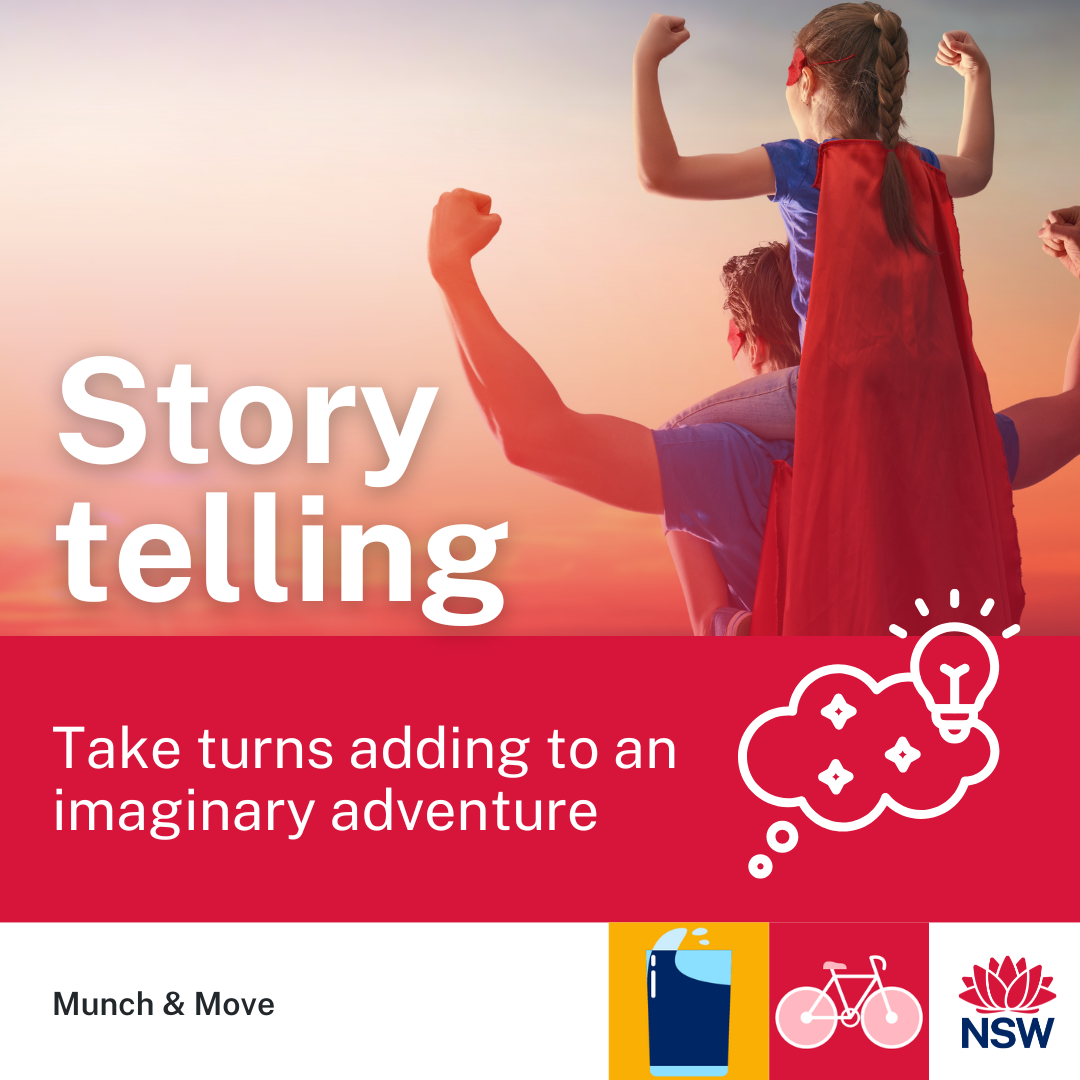
On your way out today, don’t forget to pick a question from the hat!
Take it home and ask your family during a meal — breakfast, lunch or dinner. Use this time to connect through conversation. If you can, eat with the children, even if it’s only a small amount. Children learn to feel safe around new foods when they see a trusted person eating that food.
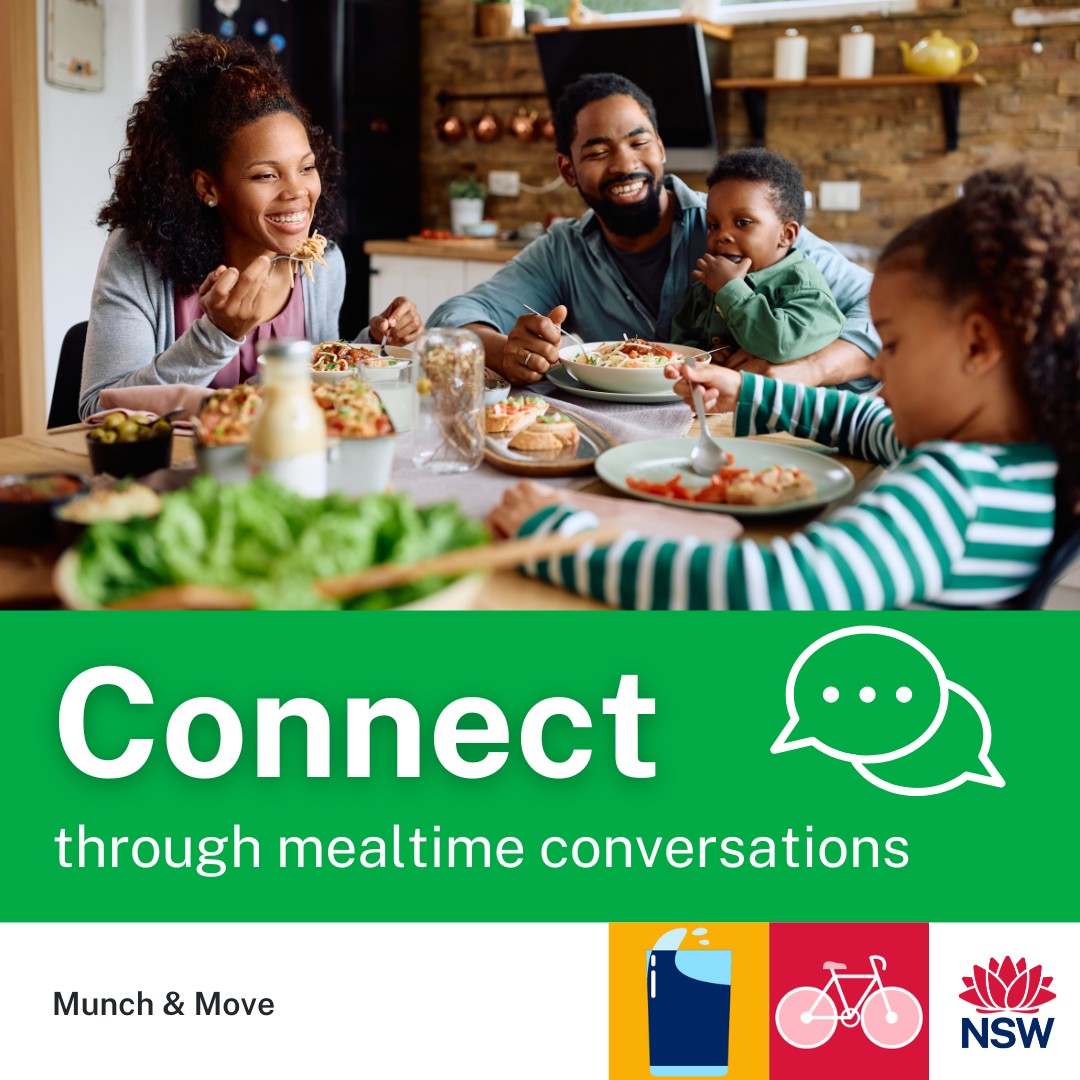
You know that in-between time when you are between one activity and the next? Why not try filling that time with some dancing!
Waiting for dinner? Pop on your favourite tunes and dance about.
Conversation starters:
- How does dancing make you feel?
- Can you dance like an animal? Try a wiggly worm, a kangaroo or a tall giraffe.
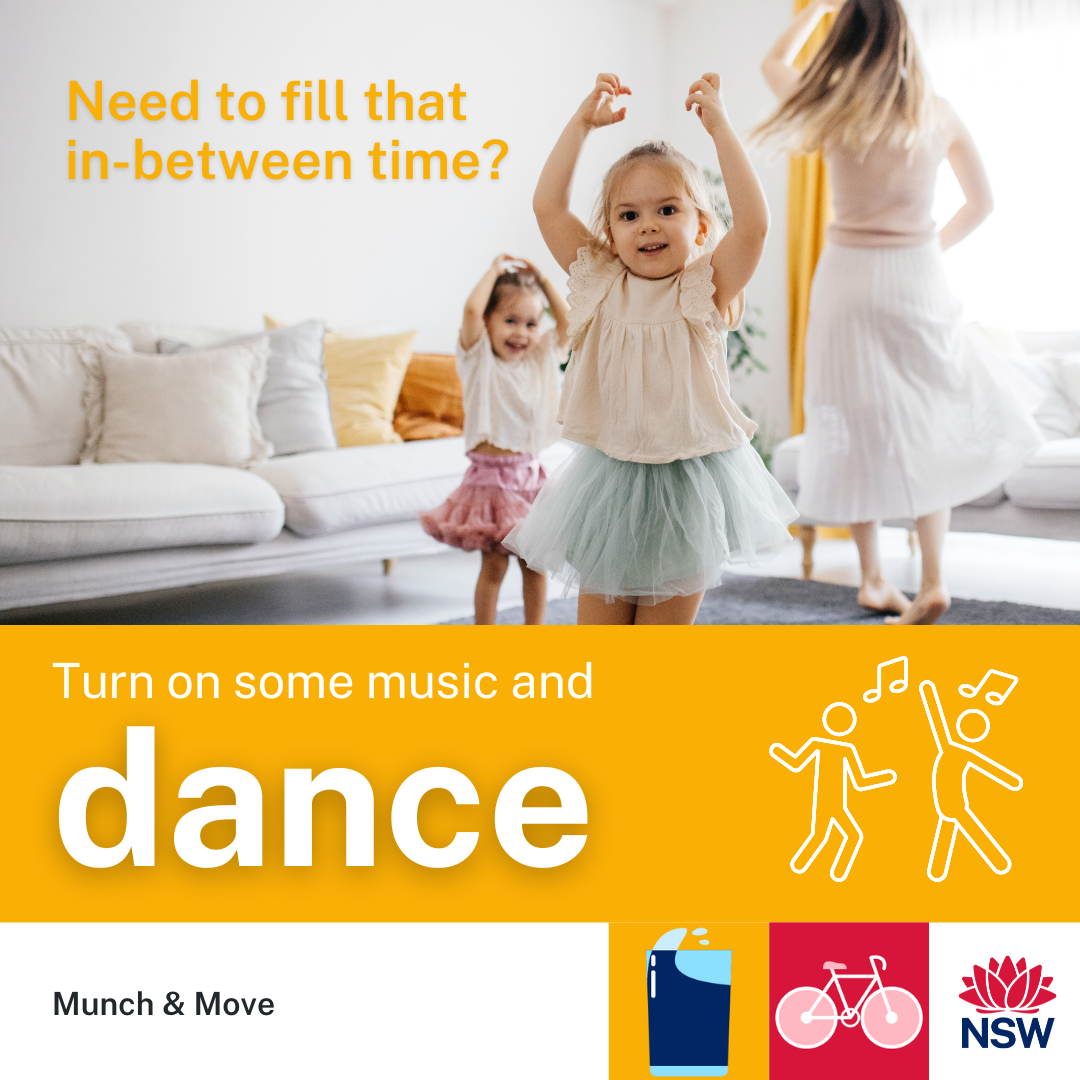
Take some time to lie down with your child and guide them through placing their hands on their belly and closing their eyes (you can do the same).
Guide your child to take slow deep breaths. Encourage your child to breathe in the flowers (breathe in through the nose) and blow out the candles (blow out through the mouth). Encourage them to notice how their belly rises and falls, like a balloon inflating and deflating.
Conversation starters:
- What was the best part of your day?
- Can you send a happy thought to someone you love? Who did you choose?
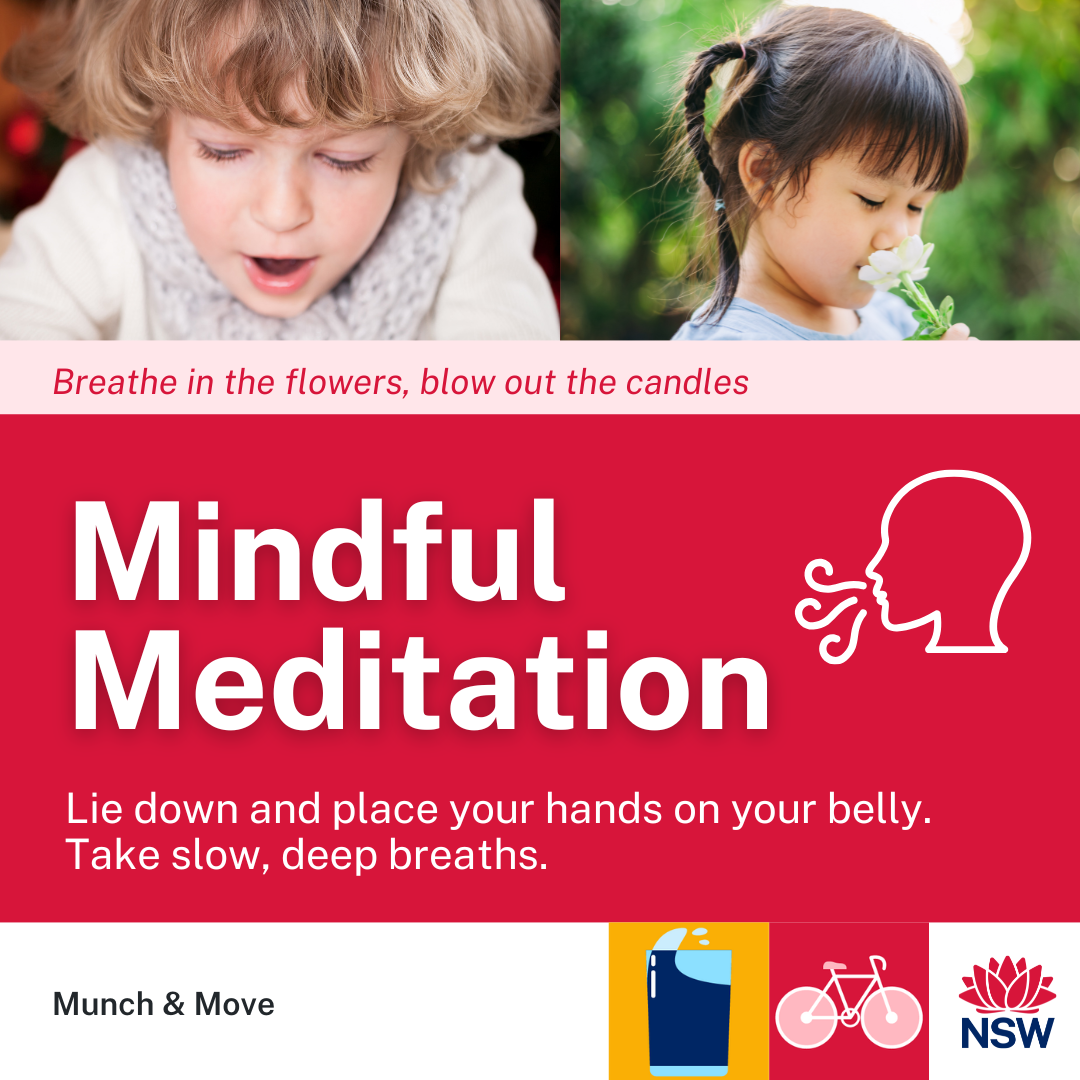
Step outside and find a leaf that is bigger than your hand.
Conversation starters:
- What colour is the leaf?
- Can you find where the leaf came from?
- What sounds can you hear around you?
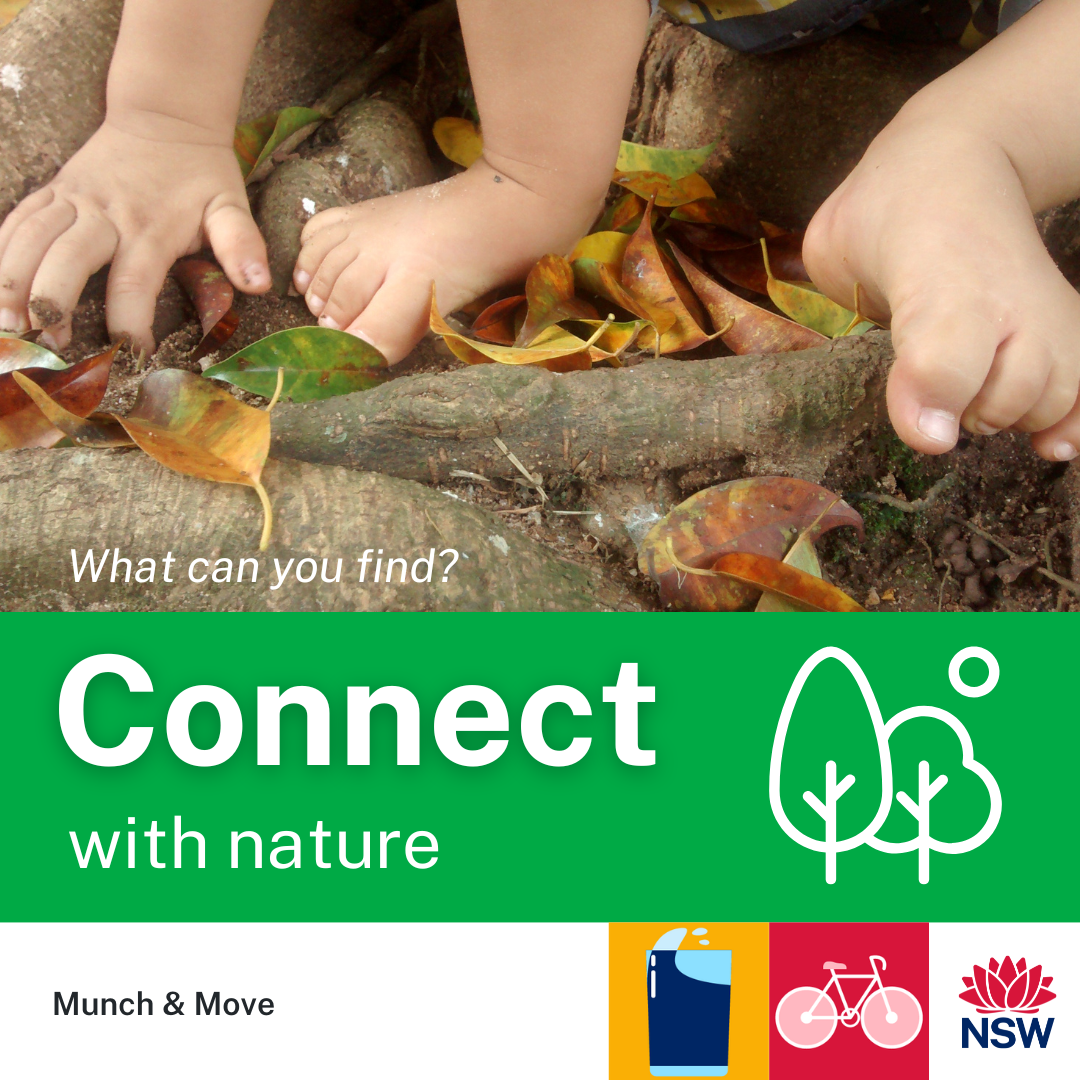
Instead of switching on the tv or a device, why not set up a pretend restaurant, shop or space station and see where you can go!
Conversation starters:
- What job would you like to try for a day?
- What would you sell in your shop?
- If you could be any animal for a day, which one would you choose?
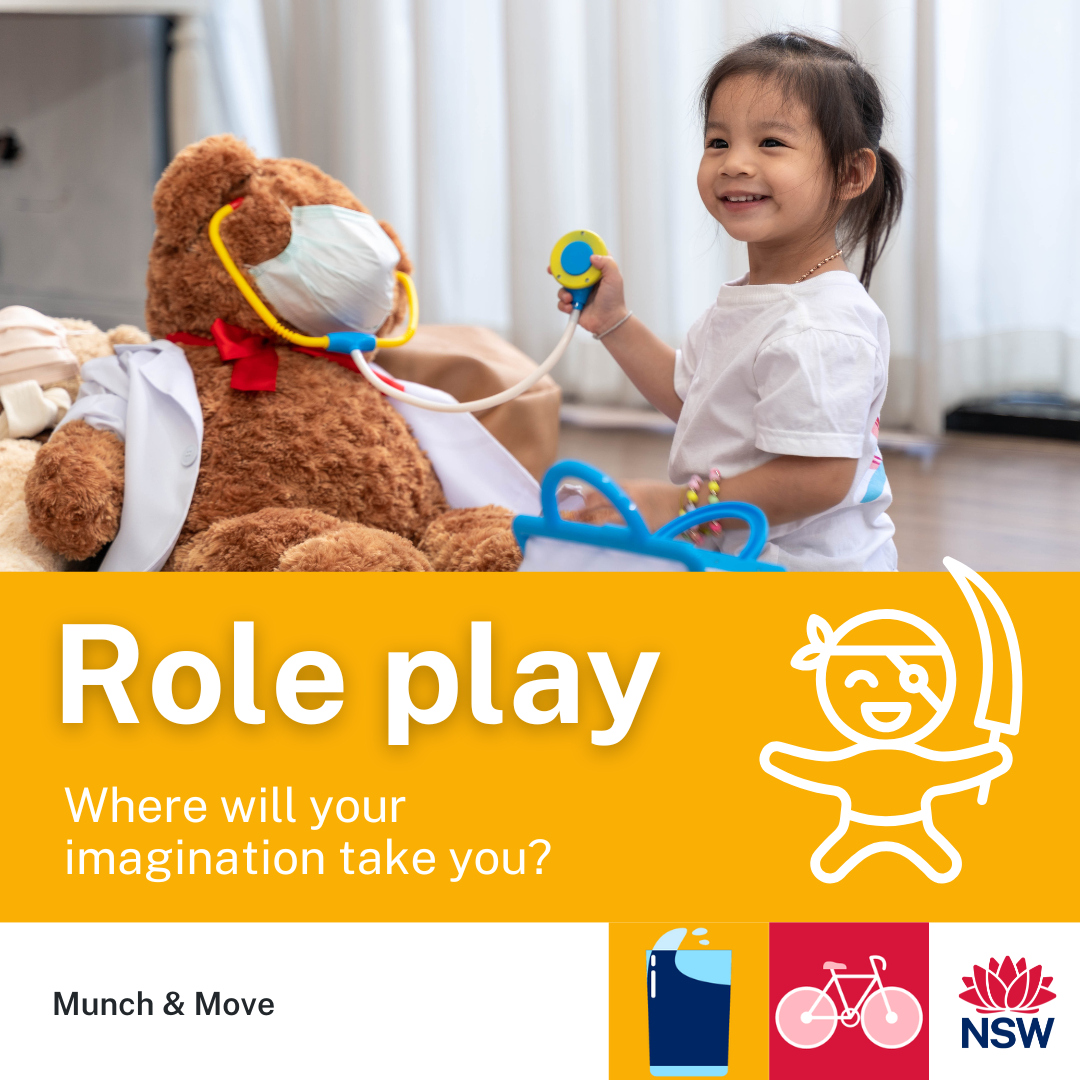
Create a cosy cubby house using blankets, chairs, and cushions. Have your child add their favourite things to make it special.
Conversation starters:
- Who lives in your dream home?
- What fun rooms or secret hiding spots does it have?
- What stories or adventures happen inside?
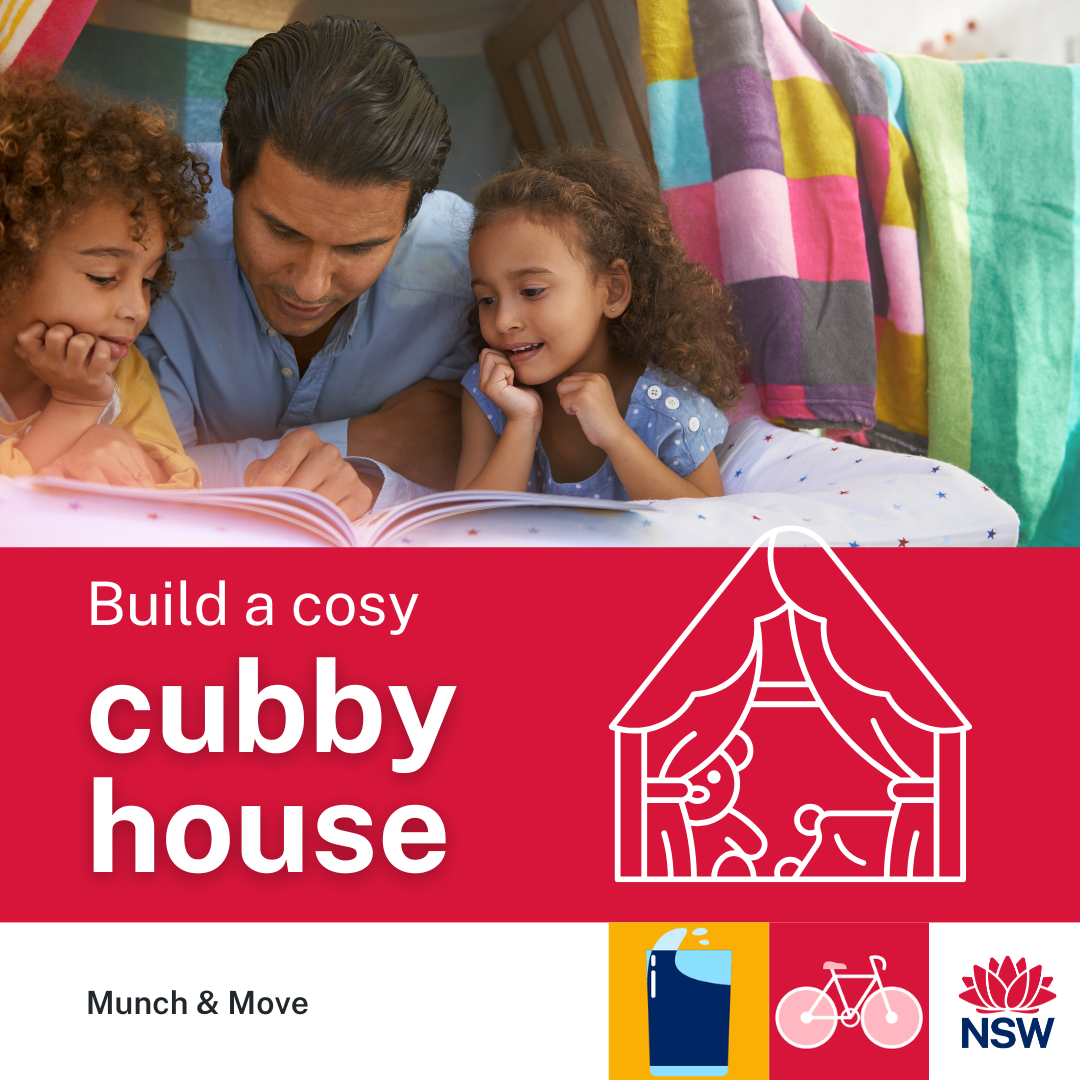
Encourage children to pick something special from home—a favourite toy, book, stuffed animal, etc. and talk about why it’s important to them.
Conversation starters:
- What did you choose to share?
- Where did you get it from?
- Why is it special to you?
- How does it make you feel when you play with or look at it?
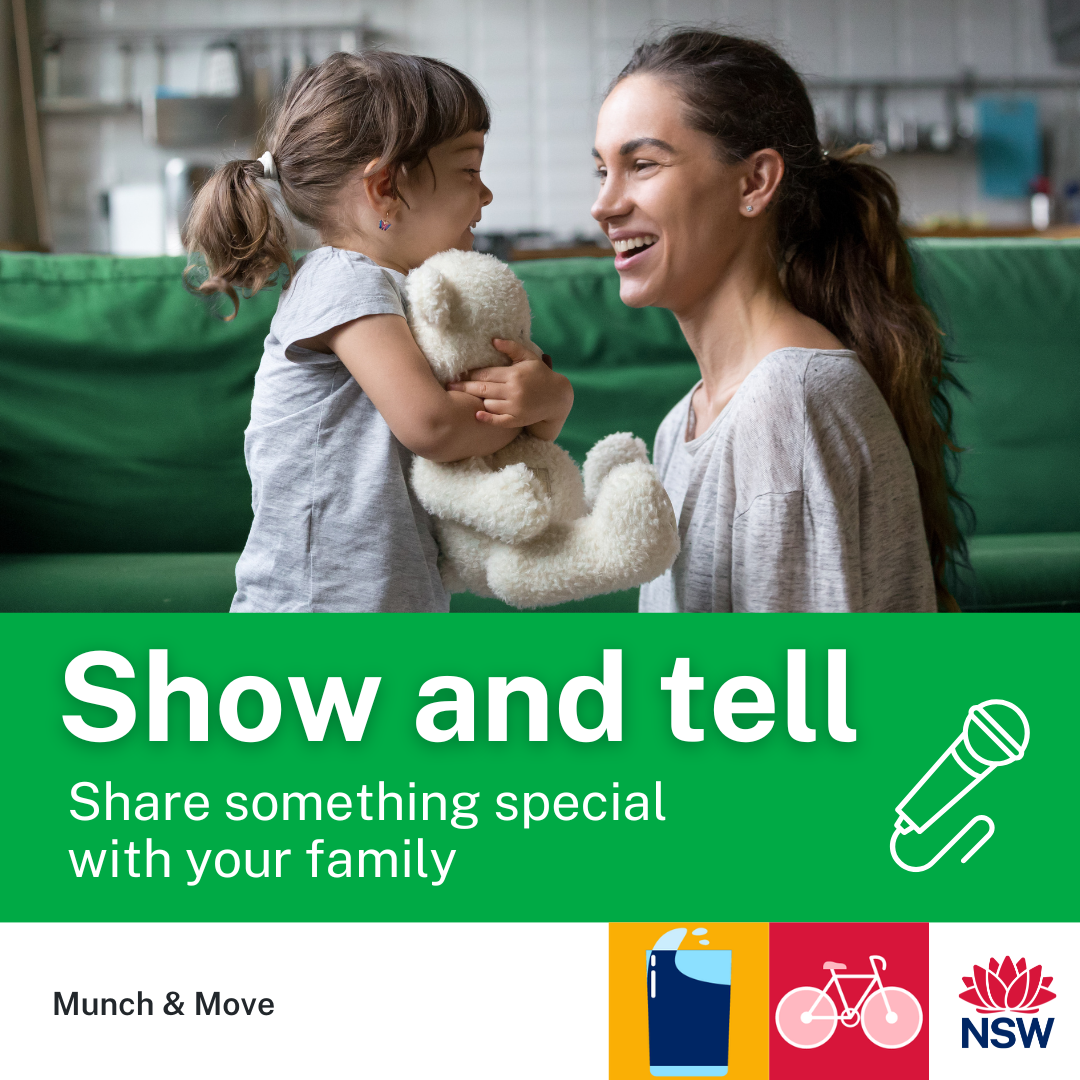
Family members take turns competing in fun challenges that get your bodies moving and develop fundamental movement skills.
Try out these activities in your family Olympics:
- Backyard running race (or running relay if you have 4 or more family members)
- Basketball dribble – who can dribble a ball the longest?
- Equestrian – set up a scarf or skipping rope on the ground. Whoever does the biggest leap wins.
- Sock toss- set up an empty washing basket in the middle of the yard. Each participant takes turns to try and get a ball of socks into the basket.
